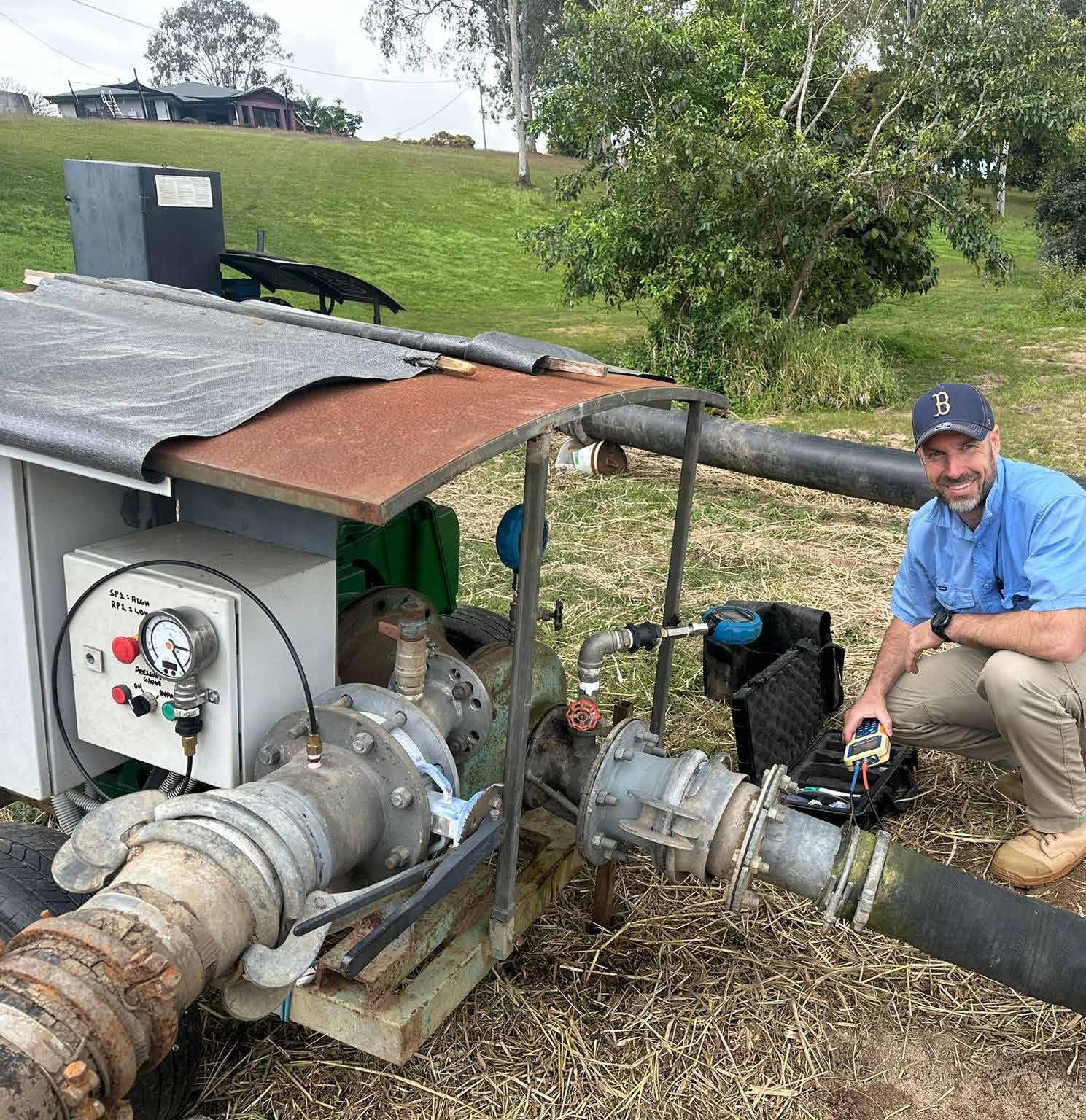
A


A
The standard FPS 4400 4” submersible pump features the TRI-SEAL floating stage system. This innovative stage system further improves efficiency and protects against wear when pumping abrasives like sand.
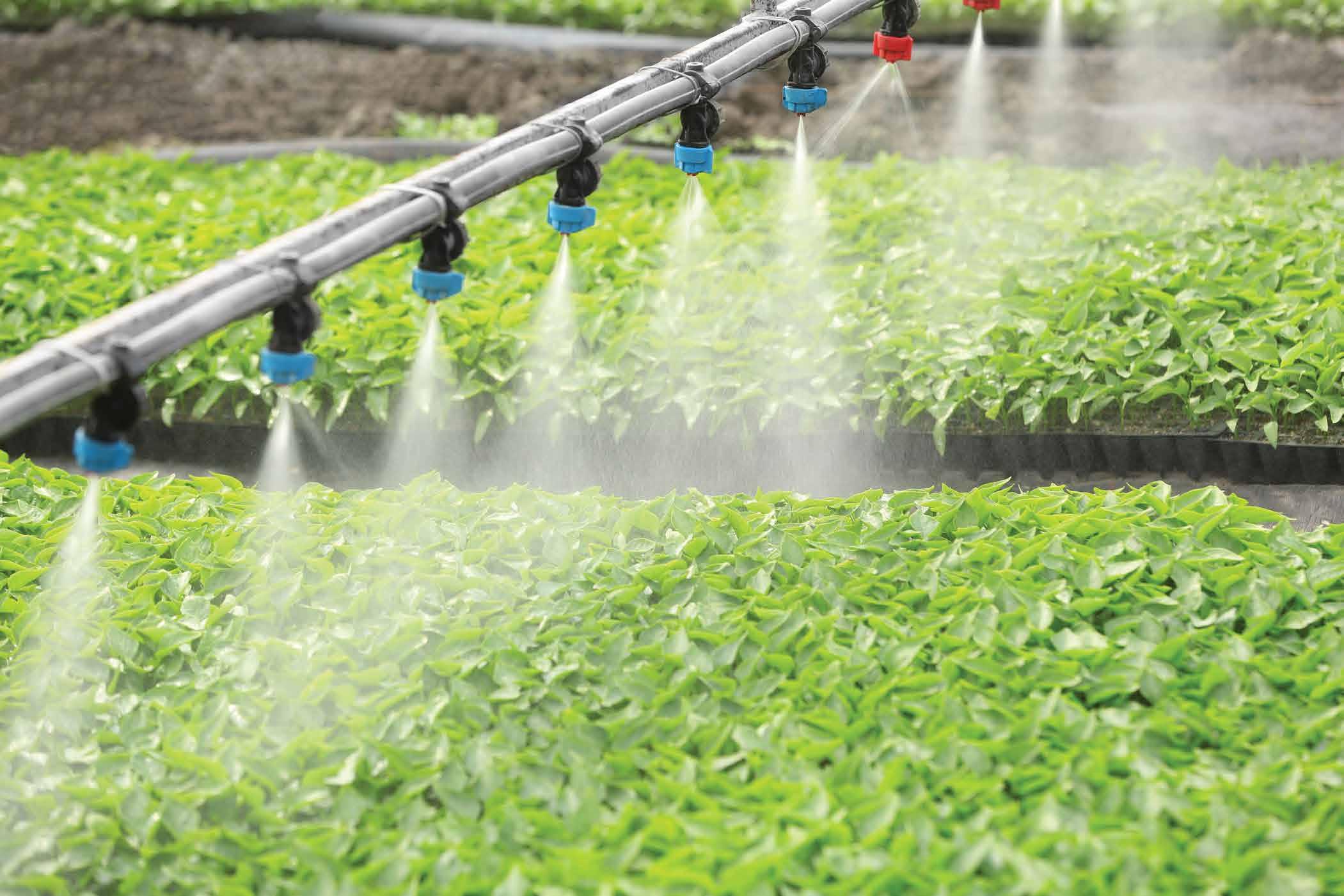
• 300 series stainless steel hub floats with the impeller maintaining a positive seal
• Phenolic water provides downthrust protection
• Celcon®* impeller provides high efficiency performance and abrasion resistance
• Noryl®** diffuser and disc - proven abrasion resistant material
• Floating stage design allows impeller to float independently
• Removable, spring-loaded check value
• Maximum water temperature: 120° F/ 49° C
• Ceramic shaft sleeve and rubber discharge bearing protect shaft and eliminate sand wear

• Powered by Franklin Electric corrosion resistant 4” submersible motors
* Celcon® is a Registered Trademark of the Celanese Corporation. ** Noryl® is a Registered Trademark of G.E.
Patented impeller hub seal system seals radially and axially to prevent fluid recirculation, providing high performance in the harshest conditions.



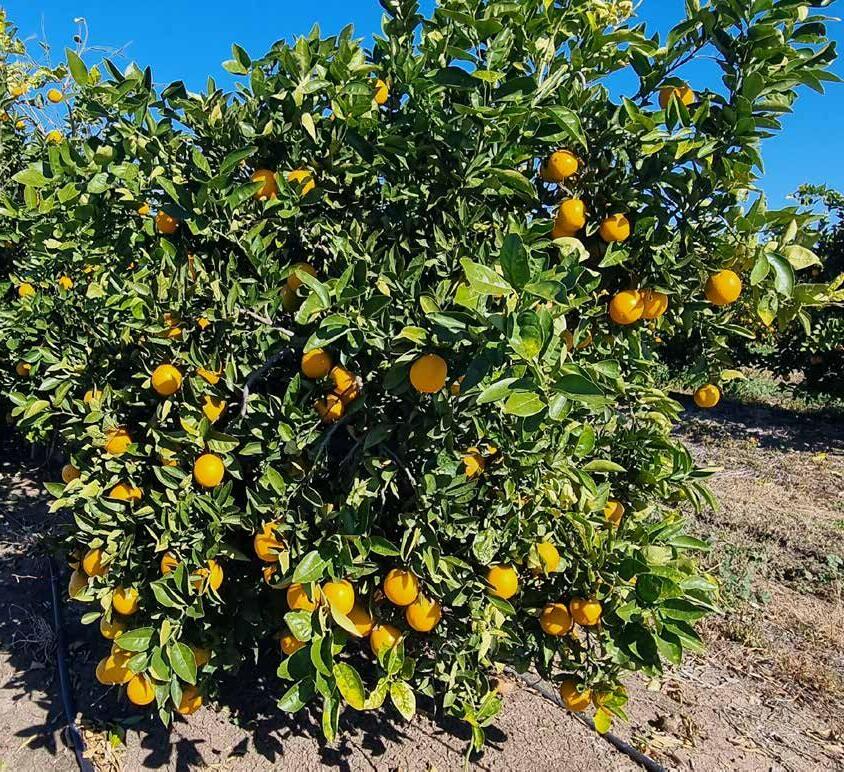

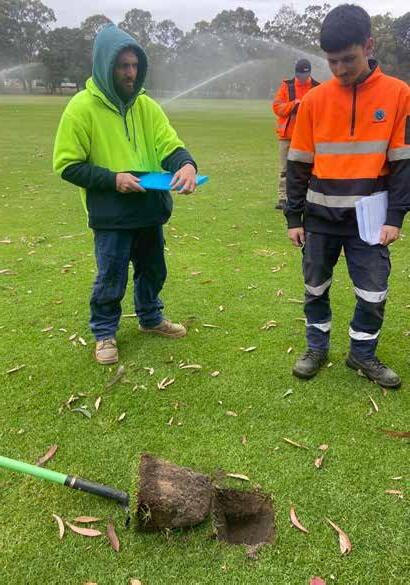

Happy New Year and welcome to the first Journal of 2025!
As we start a new year, it’s a great time to reflect on the challenges and achievements of the past 12 months and share our plans for the future of Irrigation Australia. A key milestone was the Annual General Meeting (AGM) held on 13 November, which provided an invaluable opportunity to connect with members, review progress and set the stage for the year ahead.
At the AGM, two formal resolutions were passed: the appointment of the auditor, and the successful adoption of Irrigation Australia Ltd’s new Constitution. This update, unchanged from the draft distributed to members, clarifies several previously ambiguous processes and allows the board to introduce by-laws to improve governance, including tightening up elections and statutory requirements.
Simon reflected on the financial results for 2023/24, which, while below expectations, showed a significant improvement on the prior year. He thanked the Irrigation Australia team for a huge effort over the previous 12 months, including the delivery of a major international conference. Simon emphasised that the focus now shifts back to core activities such as delivering high quality training programs to industry and expanding other member benefits.
Dave reflected on key achievements of the year, including the transformation of the Registered Training Organisation (RTO). He shared details of a new combined student and learner management system designed to revolutionise the way training is delivered and significantly enhance the student experience. Dave also outlined plans for future events and new opportunities for collaboration with members and stakeholders.
The financial stability of the Association is front of mind. While the Sydney conference was a fantastic event, its financial outcome was well below hopes. This means we need to place an immediate focus on improving revenue, including seeking more government financial support for training and other activities, ensuring that successes help offset costs for members.

Members will also see a specific, intense effort around industry careers. You’ll be hearing more about this – for a start, see our articles on pages 37 and 52 of this issue. We also are pleased to announce the successful candidates in the recent election of directors:
• Valentina Tripp (re-elected)
• Rob Nadebaum (re-elected)
• Matthew Binder (re-elected)
• Grieg Graham (re-elected)
• Carl Walters (re-elected)
• Lucy Wilson (new)
Thanks again to Paul Smith for his contribution to the board over the last 12 months and thank you to all who took the time to nominate for the roles.
Simon Treptow, Chair Dave Cameron, CEO
Want
Irrigation Australia website.


CONFERENCE,
a n
e x h i
i t i n g a t t h e I r r i g a t i o n A u s t r a l i a
I n t e r n a t i o n a l C o n f e r e n c e & E x h i b i t i o n ,
a s w e l l a s r e g i o n a l E x p o ’ s

TRAINING DISCOUNTS
R e c e i v e s i g n i f i c a n t m e m b e r d i s c o u n t s o n n a t i o n a l l y
a c c r e d i t e d i r r i g a t i o n t r a i n i n g a n d q
I r r i g a t i o n A u s t r a l i a i n c i t y a n d r e g i o
CERTIFICATION DISCOUNTS
R e c e i v e s i g n i f i c a n t m e m b e r d i s c o u
o n t h e j o i n i n g f e e a n d r e n e w a l f e e
C e r t i f i c a t i o n P r o g r a m a d m i n i s t e r e d
I r r i g a t i o n A u s t r a l i a
C e r t i f i c a t i o n i s a n a t i o n a l p r o g r a m o f i n d u s t r y
r e c o g n i t i o n C e r t i f i c a t i o n a d d s i n s t a n t c r e d i b i l i t y w i t h
c u s t o m e r s , i n c r e a s e s j o b o p p o r t u n i t i e s , a n d d e m o n s t r a t e s
I r r i g a t i o n A u s t r a l i a h o s t s a n u m b e r o f r e g i o n a l e v e n t s a n d s i t e
v i s i t s a c r o s s A u s t r a l i a T h i s i s a g r e a t o p p o r t u n i t y f o r
m e m b e r s a n d i n d u s t r y c o l l e a g u e s t o c o m e t o g e t h e r t o
n e t w o r k , a n d d i s c u s s n e w c h a l l e n g e s a n d t e c h n o l o g i e s

y o u r c o m m i t m e n t t o e f f i c i e n t w a t e r m a n a g e m e n t
ADVERTISEMENT DISCOUNTS ON IRRGATION AUSTRALIA PUBLICATIONS
ACCESS E-KNOWLEDGE
I r r i g a t i o n A u s t r a l i a ' s e - k n o w l e d g e r e p o s i t o r y
h a s s i g n i f i c a n t r e s o u r c e s o f t e c h n i c a l p a p e r s ,

c o n f e r e n c e p a p e r s , p u b l i c a t i o n s s u c h a s
T h e I r r i g a t i o n J o u r n a l a n d T h e O v e r f l o w , a n d F A Q ' s a v a i l a b l e o n l y f o r m e m b e r s
G a i n a c c e s s t o t h e m e m b e r s o n l y p o r t a l
o n t h e I r r i g a t i o n A u s t r a l i a w e b s i t e T h r o u g h t h e p o r t a l
y o u c a n m a n a g e y o u r I r r i g a t i o n A u s t r a l i a m e m b e r s h i p , r e g i s t e r y o u r s t a f f / e m p l o y e e s f o r t r a i n i n g , a n d a c c e s s m e m b e r s o n l y d o c u m e n t s , p r e s e n t a t i o n s , a n d o t h e r m a t e r i a l s

DISCOUNTS ON WATERWISE ENDORSEMENT (WA Only)
R
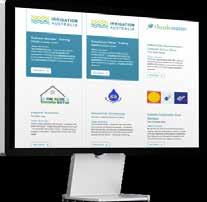
MANAGE JOB OPPORTUNITIES
S h a r e y o u r u p c o m i n g j o b v a c a n c i e s w i t h t h e I r r i g a t i o n A u s t r a l i a
DISCOUNTS ON INDUSTRY PUBLICATIONS & MERCHANDISE
I r r i g a t i o n A u s t r a l i a o f f e r s a w i d e r a n g e o f
b o o k s , e B o o k s a n d o t h e r m e r c h a n d i s e
t h r o u g h i t s o n l i n e s t o r e M e m b e r s r e c e i v e
s i g n i f i c a n t d i s c o u n t s o n m a t e r i a l s
• Bryce Neyland shares ten practical tips to guide irrigation professionals through the design and delivery of successful horticultural projects.
• Start by clearly defining the project scope and identifying key priorities to align with stakeholder expectations and goals.
• Maintain alignment by regularly updating and sharing project timelines, ensuring all parties are aware of progress and potential delays.
• Communicate effectively with stakeholders by setting clear expectations for updates, meetings, and change management processes.
• Optimise designs by addressing often-overlooked factors like irrigation drainage, fertigation, and maintenance needs to enhance outcomes.
• Ensure accurate implementation and employ robust quality assurance systems to deliver reliable results that foster trust and future opportunities.
Bryce Neyland, Engineering and Development Manager from Rural Funds Management, is leading the development of 3,000 ha of macadamia orchards throughout central Queensland. As a certified irrigation designer and chartered engineer, he manages both the design and onsite project implementation. The project, spanning two regions, involves multiple contractors, advisors, consultants and stakeholders, making it uniquely complex and large in scale.
As the first phase concludes, Bryce shares practical tips and processes to help irrigation professionals succeed in their own projects. The same principles apply regardless of your role or the scale of the project.
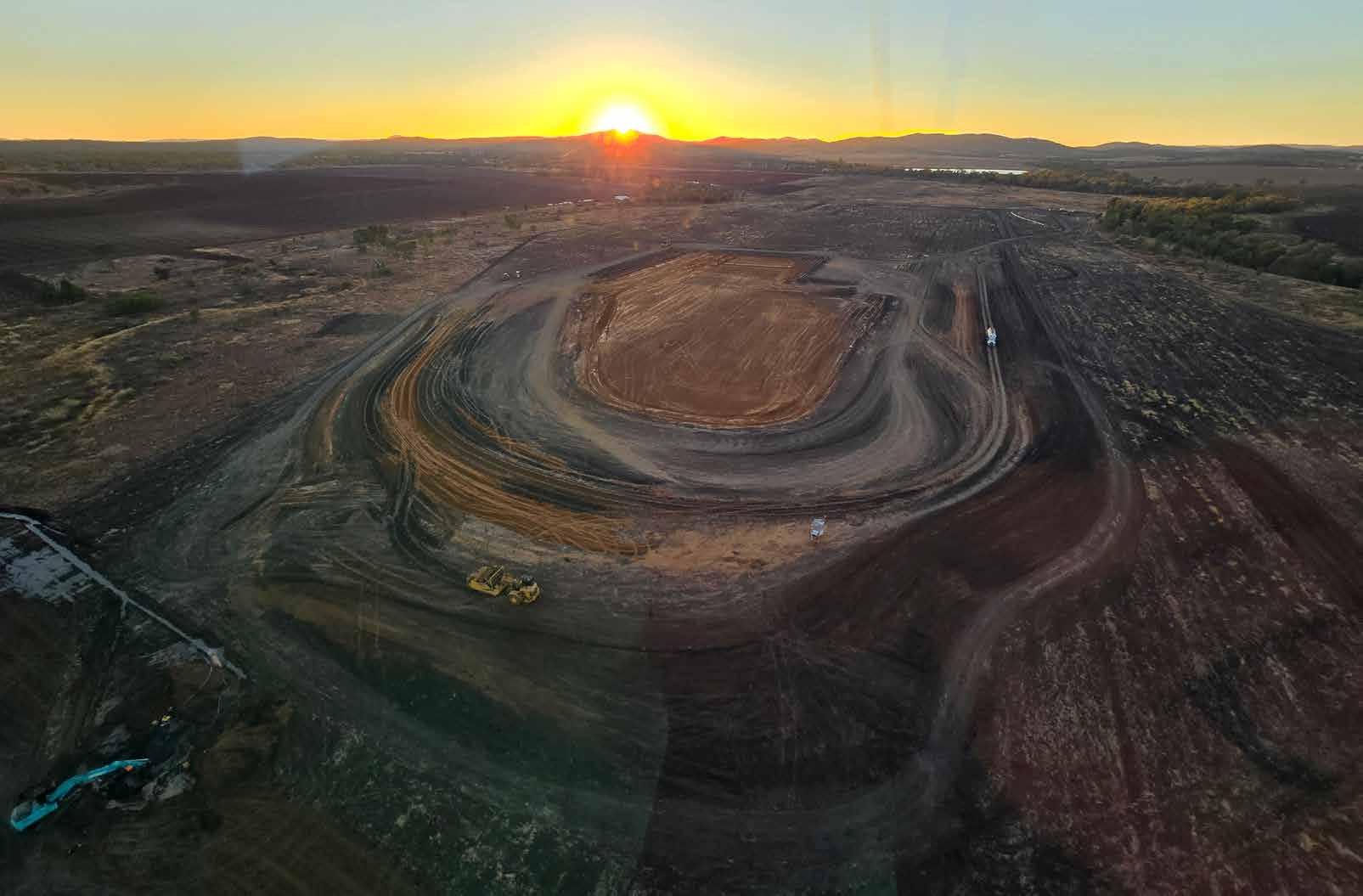
Advancing technology, the need for efficient water and power use, rising costs, higher yield expectations and diverse stakeholders make effective processes essential. Managing expectations is challenging, and failing to address these early can lead to missed opportunities. A few simple, yet often overlooked, steps in the project outline, design and delivery stages can make a big difference to outcomes.
outline
Start your project on solid ground by setting a clear benchmark to guide the process.
1. Define the scope
Are stakeholders focused on agricultural flexibility, performance, efficiency, or sticking to a strict budget in a situation where compromise might be needed? Identifying key drivers and expectations early is crucial, as these factors can significantly influence the design.
Everyone wants the upgrade – until they see the price tag. Determining what is most important to stakeholders is difficult without clear cost estimates. Creating high-level scenarios, cost breakdowns and justifications early in the process enables informed decisions. Document these decision points to avoid confusion or questions later about how conclusions were reached.
2. Establish and communicate the timeline
Developments often start with a clear end date but lack detail about intermediate steps. Time wasted at the start can create issues later. Regularly update timelines, such as a Gantt chart, and share them with stakeholders to maintain alignment.
Use tools like Monday.com to provide a single, easily accessible source of truth. This ensures everyone knows the project’s status, identifies delays, and understands their impact on the final deadline.
3. Keep stakeholders updated
Changes happen and questions will arise. Set clear expectations from the start about when and how you’ll update stakeholders, schedule meetings and communicate changes. Structured communication saves time and prevents surprises.
Design
Now that you know what the desired outcome is, it's time to get into the details. While every irrigation design focuses on achieving peak application rates within the required watering window, there are often-overlooked considerations that can significantly impact success.
4. Design to minimise irrigation drainage
Drainage from irrigation infrastructure when it’s turned off can harm orchard health, sometimes catastrophically. Break blocks into smaller valves to limit submain or lateral size,
ensure blocks push uphill to minimise submain drainage, and use strategically placed lateral or submain check valves to manage flow. While these measures may increase costs, they can protect orchard productivity.
5. Incorporate other designs and background information
Include considerations for earthworks, drainage systems, orchard variety layouts, and storage or traffic areas for harvest. She’ll be right until it’s not, and no one wants to be redoing designs if it can be avoided. The right irrigation layout considers all the factors but is difficult to achieve if you don’t have all the information to begin with.
While the mainline sizing may be appropriate to achieve the desired peak irrigation application, it might not suit fertigation, which often operates at lower flow rates. Use tools like Irricad to model travel times and nutrient variances, ensuring all stakeholders understand the limitations. Too often this is ignored, and effective fertigation becomes near impossible to achieve after the fact.
7. Plan for installation and maintenance
Seldom do you consider how the installation may be staged, or what will happen if there is a leak when you are laying out a new irrigation system. Consider the placement of isolation valves to enable staged installation and to isolate sections of the property in the event of a leak. Furthermore, strategically placed scour points will allow easy flushing of the main after installation or any breakdown.
8. Critical valve is king
In the irrigation community, we tend to focus on designing pipework based on modelled velocity. While this is important, the designer should also be aware of the critical valve in the paddock that dictates the pump duty and the resulting power consumption. Consider the hydraulic losses in each section of the mainline en route to the critical valve (metres of loss per 100 m of pipe is a common metric). What upgrades could help reduce the head requirement? Small changes in pipe size can shave metres off your duty, often with a short payback period.
It’s time to hit the ground. Here are some tips on how to ensure the plan gets executed.
9. Get strict about accuracy
The best designs and farm layouts are only as good as the final product. While most computer-aided irrigation design tools facilitate accurate, georeferenced designs, too often the end result is roughed in.
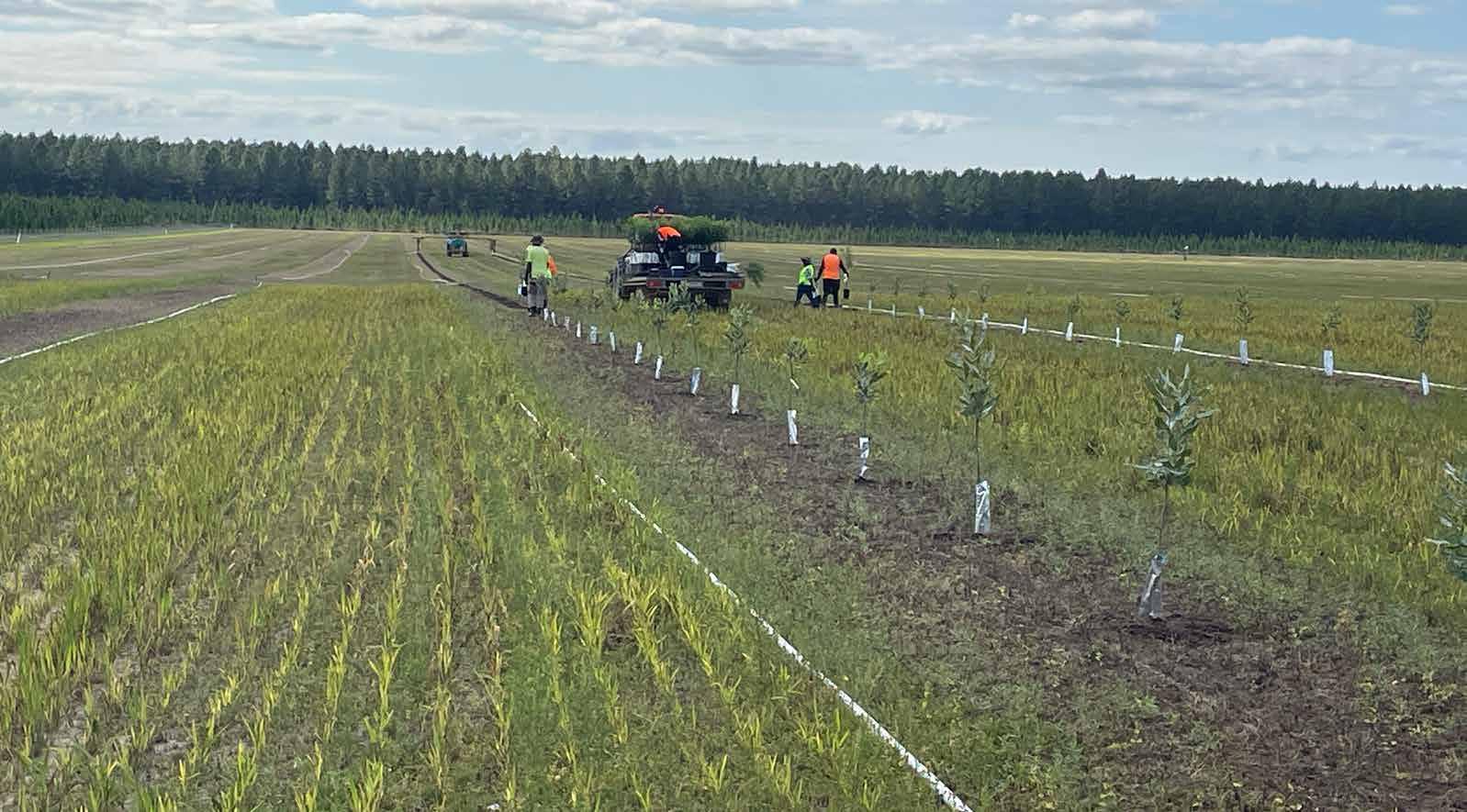
Tractor GPS systems such as Precision Technology enable accurate layout marking without the need for an onsite surveyor. Accurate ground-truthing is critical to maintaining farm trafficability and ensuring the planting plan doesn’t impede the irrigation network (no one wants to plant through a pipe).
Good record keeping and quality assurance helps everyone; from giving stakeholders confidence in a quality installation, to contractors having records to go back to in the event of an issue. Georeferenced tools like Avenza Maps can help you record progress photos or records of critical junctions. Pressure-test the system following installation to catch and fix issues before demobilising. No one likes to admit it, but mistakes and leaks happen. A good quality assurance system can be onerous, but good records and practices help protect everyone.
Horticultural projects can be challenging, but with thoughtful planning, detailed design, and careful execution, you can achieve successful outcomes. By addressing the oftenoverlooked aspects of irrigation systems – such as drainage, fertigation, and critical valve design – you can maximise performance and efficiency while minimising costly rework. Clear communication, accurate implementation, and robust quality assurance ensure the project meets stakeholder expectations and leaves a lasting positive impression.
Rural Funds Management (RFM) is one of Australia’s most experienced agricultural fund managers with extensive sector expertise in acquiring, operating and developing assets. Sector experience includes almonds, poultry, macadamias, cattle, cropping, viticulture and water. RFM currently manages $2.4b of agricultural assets on behalf of retail and institutional investors.
Bryce
some fascinating




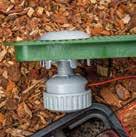

Go wire-free with the Wireless Valve Link! Using advanced radio technology, this innovative system makes it easy to connect valves without running wire or cutting into hardscape. Designed for Hunter ICC2 and HCC Controllers, it saves time and money with simplified installation, quick station expansion, and reduced maintenance. When complex landscapes pose a challenge, go wireless!


To learn more, visit hunter.info/ WVLem

National Free Call: 1-800-HUNTER
Toll-Free Fax: 1 -800-651-680
www.hrproducts.com.au hrsales@hrproducts.com.au
LANDSCAPE IRRIGATION | Built on Innovation® Learn more. Visit hunterirrigation.com

Tel: 1-300-856-368
Fax: 1-300-856-369
www.nelsonirrigation.com.au info@nelsonirrigation.com.au
50 Lynch Street Hawthorn, VIC 3122, Australia Tel: 61-3-9562-9918
• Sydney's Bicentennial Park is home to SIMP@CT, the world's largest smart blue-green infrastructure project.
• The project uses advanced AI-driven technology to optimise irrigation and cool the environment.
• More than 300 sensors monitor soil, temperature, and other conditions. The data is used by an AI-driven model that is continually learning from the data and adapts irrigation scheduling to maintain optimum soil moisture.
• By reducing water use by 44-70 per cent, SIMP@CT saves thousands of litres each year while maximising urban cooling.
• NSW Government analysis shows a $3 return for every $1 invested, with annual benefits of $2.3 million due to reduced heat-related health issues and operational savings.
• SIMP@CT’s model is applicable beyond parks, with potential in agriculture, golf courses, botanic and landscaped gardens for efficient water use, cost savings, and healthy landscapes.
• It has won multiple awards for technology innovation, research, sustainability and climate positive design.
As cities grow and climate change drives temperatures higher, finding cost-effective ways to cool urban environments has become essential. Traditional cooling systems are often energy-intensive and expensive, but a new solution combining smart technology and green infrastructure offers a sustainable alternative.
At Sydney’s Bicentennial Park, the SIMP@CT (Smart Irrigation Management for Parks and Cool Towns) project is the world’s largest smart blue-green infrastructure project. SIMP@CT shows how a data-driven irrigation system can provide lasting cooling while delivering economic value.
SIMP@CT cools the city, saves water, and detects leaks
The SIMP@CT project, led by Western Sydney University in collaboration with Sydney Water, the NSW Government, and Sydney Olympic Park Authority, has created an advanced irrigation system that uses a network of more than 300 sensors to monitor environmental factors like soil moisture, air temperature, sunlight, wind speed and relative humidity.

Sydney’s Bicentennial Park is the site of the world’s largest smart blue-green infrastructure project.

This data informs an AI-driven model, optimising irrigation schedules over 200 irrigation zones to apply water precisely when and where it’s needed, reducing waste and enhancing the cooling effect of vegetation.
Over time the SIMP@CT system has ‘learned’ how best to respond to current and forecast environmental conditions to maintain optimal soil moisture levels. It continues to learn and improve to make the best use of water for maximum cooling.
This is achieved by combining weather forecasting and sensing environmental conditions in real time and using this information to run many simulations in the digital twin of the park. Here, the algorithms test how evapotranspiration, predicted rainfall and vegetation type influence soil moisture levels. The system can revisit data and irrigation commands from the past and learn from them, which helps it make better irrigation decisions in the present. Should irrigation be switched on if rain is predicted? And how likely is it that the forecast amount of rain will really fall? How long will soil moisture last in a forecast hot spell? While humans may answer these and other questions based on experience, SIMP@CT uses empirical, location-specific data, which is growing every day it operates.
The system’s precision not only saves water but also allows it to detect infrastructure issues like leaks. For instance, when a pipe burst in October 2023, SIMP@CT’s sensors flagged the unusually high water usage, enabling park managers to quickly address the problem and prevent significant water loss. This early detection minimises operational costs, preserves resources, and ensures the park’s landscape remains healthy and sustainable.
SIMP@CT also helps visitors enjoy their time in Bicentennial Park. The system provides real-time data on air temperature and soil conditions, accessible via a web app that allows visitors to identify the coolest spots for recreation. For example, on a summer day when temperatures in Sydney Olympic Park exceed 35 °C, visitors can locate areas that are around 5-7 °C cooler, making for a more comfortable and enjoyable experience. This interactive feature also raises awareness of environmental conditions and educates the public on sustainable practices.
Bicentennial Park, located on Wann-Gal land in Sydney Olympic Park, is a 42 ha green space with wetlands, picnic spots, playgrounds, and trails, offering a natural retreat for residents and visitors alike. Originally created to celebrate Australia’s Bicentenary, it’s now a popular spot for relaxation and events throughout the year.
In December 2019, a severe heatwave and an irrigation failure caused serious damage to the park’s vegetation. In response, experts across planning, engineering, and landscape management came together to find ways to protect the park from future heatwaves. This led to the SIMP@CT project, which began in June 2021, led by Western Sydney University and involving 12 government, university, and industry partners.
SIMP@CT uses advanced technology, including machine learning and digital mapping, to manage irrigation more effectively. By monitoring environmental conditions, the system automatically adjusts water use, boosts plant health, and detects infrastructure issues. SIMP@CT has been running since February 2023, keeping Bicentennial Park green and cool despite rising urban temperatures.


More than 300 sensors collect data from all over the park.
Big cost savings
SIMP@CT’s optimised irrigation has greatly reduced water consumption, lowering usage by 44-70 per cent compared with previous years. During peak summer months in January and February 2024, the system used only 4.8 ML of recycled water, a 70 per cent reduction from the 12.9 ML used in previous years. This efficient use of water also supports sustainable practices at Sydney Olympic Park, where recycled water is used in buildings for toilet flushing and laundry.
This efficiency translates into substantial cost savings, establishing SIMP@CT as a model that other large urban green spaces could replicate. A University of Technology Sydney study suggests that water savings alone could recover the system’s initial investment within a few years. Beyond water savings, SIMP@CT delivers broad economic value: a cost-benefit analysis by the NSW Government projects more than $3 returned for every $1 invested, with an annual economic impact of around $2.3 million by reducing heat-related hospital admissions and fatalities. Additionally, AI-optimised schedules lower energy needs for pumping, cutting operational costs and the carbon footprint. Over time, healthier plants and reduced reliance on pesticides and fertilisers further strengthen the economic case for SIMP@CT.
The cost savings from reduced water use alone could offset the initial investment in the SIMP@CT system within a few years.
Scaling SIMP@CT’s impact across other sectors SIMP@CT has applications beyond urban parks. In agriculture, for instance, SIMP@CT’s adaptive irrigation model could help farmers use water more efficiently, potentially boosting crop yields while conserving resources. Golf courses, botanical gardens, and other large irrigated areas could also implement SIMP@CT to reduce their water consumption and operating costs while maintaining healthy landscapes.

The project team built SIMP@CT so that it can also be used at much smaller irrigated sites. Theoretically, the technology can work with a single weather station and one soil moisture sensor. This means that schools, hospitals grounds or landscaped gardens around apartment buildings could benefit from it.
The project has shown that investing in smart, adaptive systems that support green infrastructure can yield significant returns, setting a benchmark for sustainable urban innovation.
Information. The SIMP@CT team has developed a series of scalability and blueprint reports, which are available online. These documents detail the technical and economic feasibility of implementing similar systems in other urban and agricultural settings. You can download them from the SIMP@CT website


Booths Remaining! Remaining!






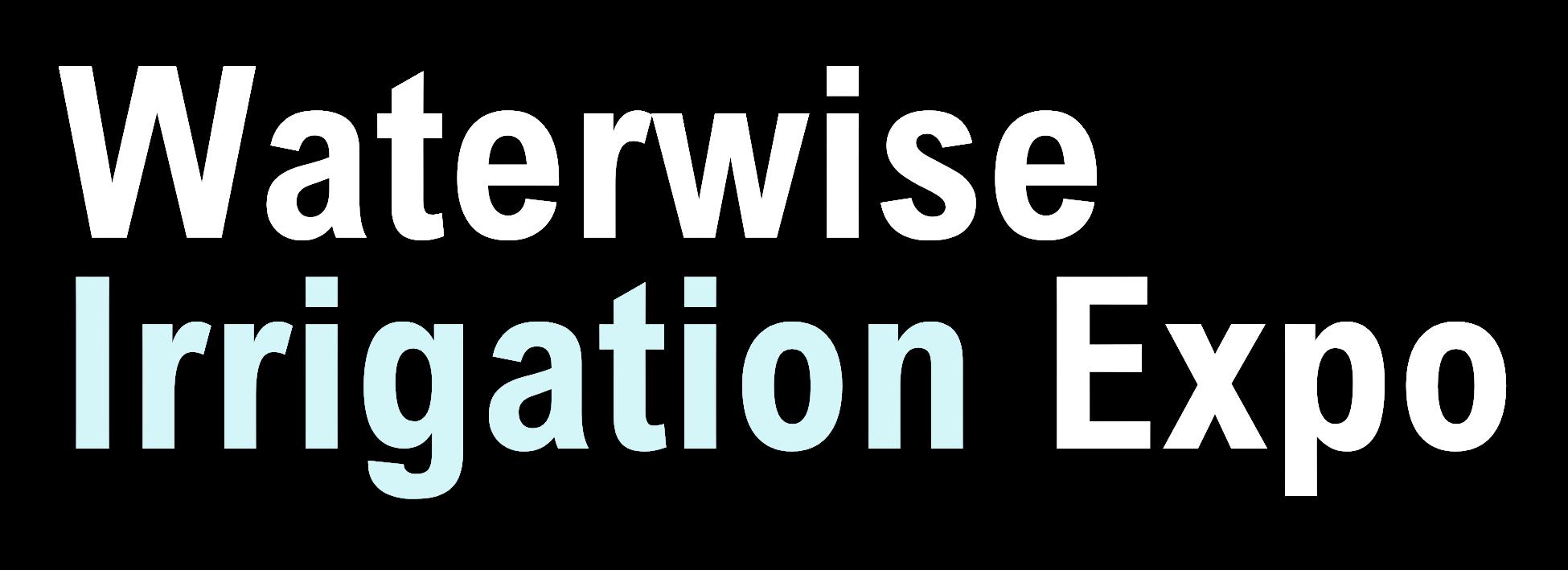
As the ultimate gathering for Western Australia’s urban landscape industry, the 2025 Waterwise Irrigation Expo serves as a vital platform for industry leaders, innovators, and stakeholders to connect, share insights, and explore the latest technologies that drive efficient and sustainable water solutions Contact rebecca new@irrigation org au for more information










‘MEGA-DROUGHT’ IN AUSTRALIA?
IT’S HAPPENED BEFORE –AND WE SHOULD EXPECT IT AGAIN
Droughts can have dramatic effects in Australia – decimating agriculture, threatening water resources and devastating the environment. Much of Australia is drought-prone, and the risk is expected to increase as global warming continues.
That’s why it’s important for Australia to be prepared for droughts, particularly those lasting multiple years.
To have some idea of just how bad things might get, we must look far back in time to see what’s come before. That’s where our new research comes in.
We examined computer simulations of Earth’s climate over the past 1,150 years. Worryingly, we found that given enough time, natural variability in Australian rainfall can produce “mega-droughts” lasting 20 years or more. If we add in human-caused climate change, it suggests future droughts will be far worse than we imagined.
Rainfall records aren’t enough
To understand the full picture of future droughts, we need historical rainfall data. But in Australia these records only go back to around the year 1900. This doesn’t fully record the huge range of natural rainfall variability over many hundreds of years.
To a degree, we can get these long records from features of the environment such as trees, which record information about rainfall changes in their annual growth rings.
Unfortunately, these natural “archives” generally only reach back a few hundred years. And they only store information about what’s happened in their local area, not across all of Australia.
Scientists need alternative ways of looking back in time –and that’s what our new research set out to do.
We used computer models of Earth’s climate from the years 850 to 2000 (1,150 years in total) to fill in the picture. The models simulate the interactions of the atmosphere, oceans, ice and land, and so provide a picture of how the climate has changed through time.
Because no single climate model is perfect, we used an “ensemble” of 11 different climate models to explore the range of droughts Australia has experienced.
First, we looked at the characteristics of Australian droughts due to natural fluctuations in rainfall. Then we compared the simulated droughts during the 20th century with those from the pre-industrial period (before the year 1850). This let us test if human-caused climate change during the past century has caused detectable changes in Australian droughts.
We paid particular attention to the Murray-Darling Basin in south-eastern Australia. It contains Australia’s largest river system and is our largest agricultural region, so it’s important to know how bad droughts there could be.
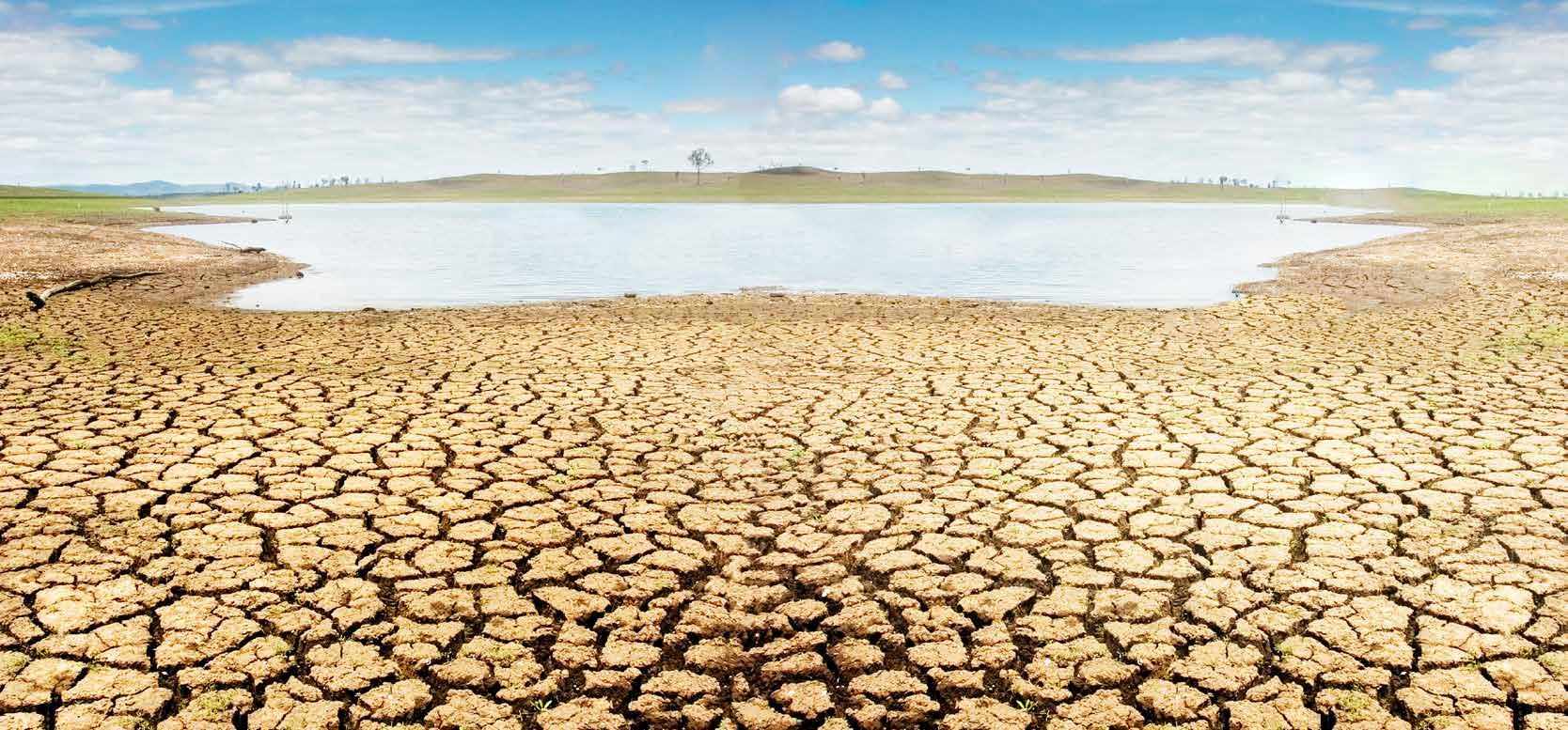
We found during the 20th century, simulated droughts in southwestern and eastern Australia – including the MurrayDarling Basin – were longer on average compared with preindustrial times.
This change is consistent with the rainfall trends expected in these regions in future due to human-caused climate change. It suggests that an emerging human influence on our climate has already made southern parts of Australia more drought-prone.
Other characteristics of simulated Australian droughts, such as their intensity or recurrence, didn’t show marked differences last century compared to pre-industrial times. In other words, human-caused climate change had probably not yet caused Australian droughts to be any drier, or changed how often we are in drought. But this influence could still emerge as climate change worsens.
The devastating impacts of Australia’s last major drought from 2017 to 2019, known as the “Tinderbox” drought, are a stark reminder of what we might expect in future. The drought was likely worsened by human-caused climate change, and preceded the catastrophic Black Summer fires.
One of the most concerning findings from our research is that even without the effects of climate change, natural variability can produce “mega-droughts” in Australia lasting 20 years or more. That is far longer than any drought that has been experienced in Australia since instrumental records began.
Our findings show mega-droughts are possible across the Australian continent. This includes the Murray-Darling Basin where typical droughts last century lasted four to five years.
A 20-year drought would make these extremes seem shortlived.
This new research shows mega-droughts in Australia are possible – even without the influence of climate change. They are a natural part of Australian rainfall variability over the long term. This finding is supported by evidence drawn from ice cores, which suggests a 39-year drought gripped eastern Australia around 800 years ago.
This is concerning, because climate change is also increasing the chance of reduced rainfall across much of southern Australia.
It’s difficult to imagine a drought lasting several decades. But our research suggests it can happen, and future droughts in Australia will be worse than any in our recent historical experience.
Our work highlights the need to consider the unthinkable when it comes to preparing for future droughts. This has implications for industry, governments and communities as they adapt to a warmer future.
Georgina Falster, Postdoctoral Fellow, Australian National University, Nerilie Abram, Chief Investigator for the ARC Centre of Excellence for Climate Extremes; Deputy Director for the Australian Centre for Excellence in Antarctic Science; Deputy Director for the Centre of Excellence for 21st Century Weather, Australian National University and Nicky Wright, Research Fellow, University of Sydney.
Acknowledgment. This article was originally published in The Conversation on 3 April 2024, and is reprinted here under a CC BY-ND 4.0 licence.


• The Soil CRC is developing next-generation soil monitoring technologies to transform irrigation and soil management.
• Two innovative tools, the BILBY wireless communication node and the BANDICOOT soil probe, are nearing commercialisation.
• The BILBY enables fully underground wireless data transmission, protecting it from machinery, pests, and livestock.
• The BANDICOOT measures multiple soil attributes simultaneously and provides real-time mapping via a smartphone app.
• Both tools were co-designed with growers to ensure they are practical, reliable, and user-friendly.
• Commercialisation efforts are underway.
The Soil CRC’s Smart Soil Sensors program is developing soil monitoring technologies that aim to revolutionise how growers manage soil and irrigation. A research team led by Dr Marcus Hardie at the University of Tasmania has developed two cutting-edge tools: the BILBY* wireless communication node and the BANDICOOT* soil probe. Both tools are progressing towards commercialisation, with realworld trials and technical refinements underway.
Both the BILBY and BANDICOOT have been developed in close collaboration with growers to ensure they are practical, effective, and user-friendly on farms. Dr Hardie said this co-design process was crucial for creating tools that meet the real needs of Australian farmers.
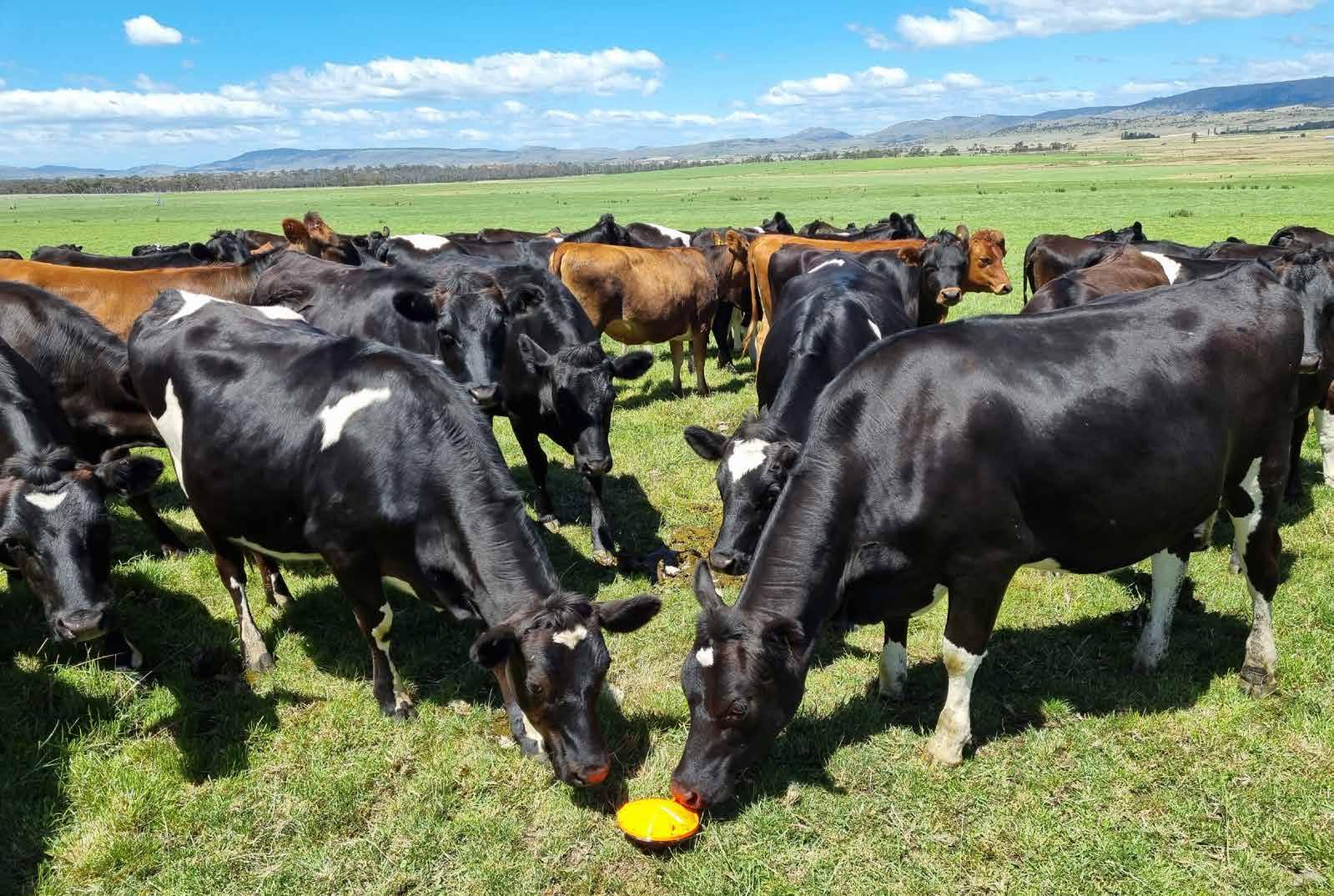
• BILBY: Enables fully below-ground wireless communication, protecting it from damage and reducing maintenance with a long battery life. Compatible with existing soil sensors, it improves data reliability and usability.
• BANDICOOT: Combines real-time GPS-linked mapping with multi-functional soil health measurements (moisture, compaction, salinity, and conductivity) in one tool, simplifying farm management.
• Farmer-centric design: Both tools were co-designed with growers to ensure practicality, ease of use, and adaptability to real-world farming needs.
The BILBY, a below-ground wireless communication node, addresses challenges associated with traditional soil moisture probes. Unlike traditional soil monitoring systems, which risk damage from stock, pests and tractors due to exposed aboveground components, the BILBY enables the sensor, power systems and communications to be safely buried in the soil out of harm’s way and sending the data through the soil.
“The BILBY is designed to make the job of measuring soil moisture easier, by enabling growers to install soil moisture probes in the middle of paddocks or crop zones without risk of damage from tractors, sprayers, pests and stock animals,” Dr Hardie said.
The BILBY can send data to an above-ground receiver located between 100 m and 1 km away, depending on burial depth, soil type, and terrain. It also has a long battery life; the battery lasts for up to five years with hourly data collection, significantly reducing maintenance needs.
Field trials with industry partners have confirmed the BILBY’s compatibility with existing soil moisture sensors, with 95 per cent of data packets successfully transmitted from a depth of 30 cm to a receiver 150 m away. Growers have also reported that it is easy to install and to access data.
The BANDICOOT soil probe is a multi-functional tool that simultaneously measures:
• soil moisture
• penetration resistance (compaction)
• salinity
• apparent conductivity.
You
can count on our expert and committed team specialising in irrigation. We have the ability to source unique and specific industry products.
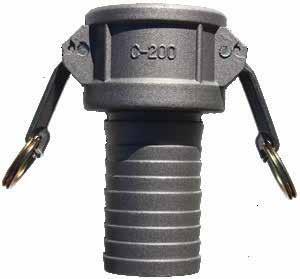





The BANDICOOT smart penetrometer is a multifunctional tool that can help growers identify a range of soil health issues.
By linking soil data to GPS coordinates, the BANDICOOT provides real-time insights through a smartphone app, enabling growers to map soil attributes with high precision.
The BANDICOOT helps growers identify and address soil health issues, such as compaction, salinity, or moisture deficits, which in turn helps them optimise irrigation, reduce soil damage, and maximise crop productivity.
Both technologies are advancing through commercialisation pathways:
• The researchers are making final refinements to the BILBY’s firmware and hardware, and a commercial partner is trialling its performance under varying crop biomass. Negotiations are underway to licence the technology for scalable adoption.
• The BANDICOOT is being prepared for market with support from the Beanstalk Drought Venture Studio, part of the Australian Government’s Future Drought Fund. This initiative aims to validate its commercial potential and establish pathways for widespread adoption. A new project with Charles Sturt University will gather grower feedback and conduct market research.
Ultimately, the Soil CRC aims to provide practical tools that give farmers data they can use. “Farmers don’t need another scientific instrument; they need tools they can chuck in the back of a ute that are farm ready and make the job of managing soils and irrigation that much easier,” Dr Hardie said.
*BILBY® and BANDICOOT® are registered trade marks of the CRC for High Performance Soils.
ABOUT THE SOIL CRC. The CRC for High Performance Soils (Soil CRC) is Australia’s largest collaborative soil research effort, bringing together scientists, industry and farmers to find practical solutions for Australia’s underperforming soils. It aims to give farmers the knowledge and tools they need to make decisions on extremely complex soil management issues. The Soil CRC is the largest collaborative soil research effort in Australia’s history, with funding until 2027. We have attracted more than $167 million in cash and in-kind resources over 10 years from our 39 participants and the Australian Government. For more information visit www.soilcrc.com.au
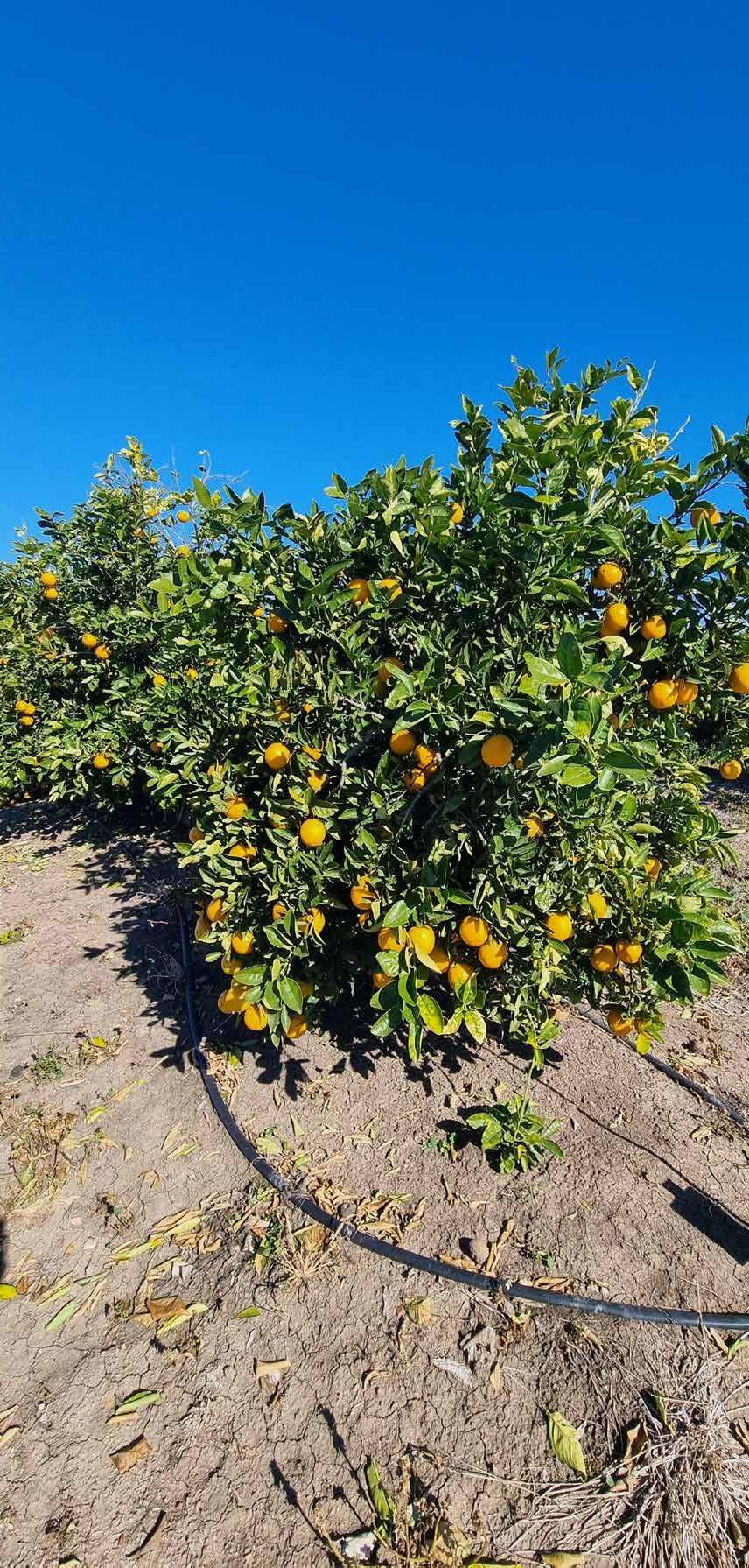
A recent orchard expansion in New South Wales demonstrates how flexible irrigation systems can support water efficiency and sustainable farming as operations grow. Located 10 km north of Moree, the 615 ha orange orchard will grow to more than 1,200 ha. Originally established as a cotton farm, the Australian-owned family business shifted to orange cultivation in 2021 to achieve higher returns per megalitre of water, and it has continued to grow ever since.
• A New South Wales orchard near Moree is expanding from 615 ha to approximately 1,300 ha, shifting from cotton to oranges for better water efficiency and profitability.
• Greg Croft from Waterquip designed a flexible irrigation system with zoning to adjust for fertigation, crop management needs and harvesting.
• Customised driplines manage a 30 per cent difference in water requirements between shaded and sunlit sides of east-west tree rows, an uncommon layout in Australia.
• The system is fully remote-controlled, allowing realtime monitoring and adjustments from anywhere.
• Brown Brothers Engineers supplied Goulds ISO pumps and jockey pumps, boosting water capacity and efficiency, supported by a Netafim filtration system handling 6 million litres daily.
• Subsurface drip irrigation is being introduced to reduce maintenance costs, with plans for more pumping stations to support future growth.
Greg Croft from Waterquip in Moree designed the irrigation system and managed the project. He characterises it as a highly technical design that provides medium flexibility, allowing the orchard to be divided into irrigation zones, or shifts. This flexibility enables adjustments to suit various operational needs, such as fertigation, crop management harvesting, and unexpected issues.
The water is supplied from multiple sources, including onsite dams and several bores. Greg said, “If a couple of bores are out of service at peak times, we need to be able to change the fields in the shift, and also catch up when required.”
The system uses inline pressure-compensating drip irrigation to deliver up to 12 mm of water a day if needed. It consists of 23 mm and 27 mm driplines with up to 400 m runs, all managed with Netafim valves and filtration. For new plantings, a single dripline is initially installed, sufficient for the first two or three years. As the trees mature, a second dripline is added. The emitters are Netafim Uniram CNL, delivering an accurate and unform 1.6 L per hour.

Field blocks are configured as a combination of ‘centre feed’ and ‘end feed’, depending on the landscape. The flow rates delivered to different size blocks vary between 63 m³/h and 93 m³/h.
Some blocks in the orchard feature east-west tree rows, an unusual practice in Australia, but necessary in this instance to avoid impeding shallow floodwaters. This tree row configuration requires a custom dripline approach to maintain a ‘balanced’ water distribution, compensating for a 30 per cent difference in water needs between the northern and southern sides of the trees, caused by shading. To address this, the system uses the same emitter flow rate on both sides but adjusts emitter spacing accordingly.
Greg said, “Getting it right is a tricky balance. I’ve been doing this since 2001; it took us eight years to refine, to be confident ordering dripline applying the correct flow rate.”
The entire system is operated remotely, with capabilities for controlling fertigation, pumps, and monitoring flow and pressure. Alerts for abnormal flow rates or pressure loss ensure the system is reliable and efficient.
The primary filtration is Netafim Alpha disc filtration, a system of two towers of 12 filters. Additionally,13 Netafim CYCLONE sand seperators, each capable of handling two million L/day, were installed at the bores to maintain water quality by preventing clogging and ensuring system longevity.
The grower also needed a third pumping station to meet the expanding orchard’s water requirement.
Brown Brothers Engineers supplied Goulds ISO end-suction pumps, which were selected for their efficiency and reliable suction lift capabilities. Goulds ISO pumps were already in use at the orchard, so adding additional units for the expansion was an easy choice, according to Geoff Hall, area sales manager at Brown Brothers Engineers.
Each of the three main pumping stations includes two GISO Pumps (125 x 100-200) with 55 kW motors, supported with 7.5 kW jockey pumps for lower flow demands. Drawing water from an on-site dam, each of the GISO pumps has a duty rate of 85 L/s at 50 m, equating to approximately 7 ML daily, ensuring the orchard has a consistent, reliable water supply.
Jockey pumps are used for low flow demands, activating first to manage smaller volumes of water efficiently. These pumps are typically smaller and more energy-efficient than the main irrigation pumps, preventing the bigger pumps cycling on and off frequently, which will lead to wear and tear. By handling low flow demands and minor pressure adjustments, jockey pumps reduce the overall energy consumption of the irrigation system.
The Netafim filtration system, equipped with 150 mm Cyclone filters - capable of handling 2 million L/day.
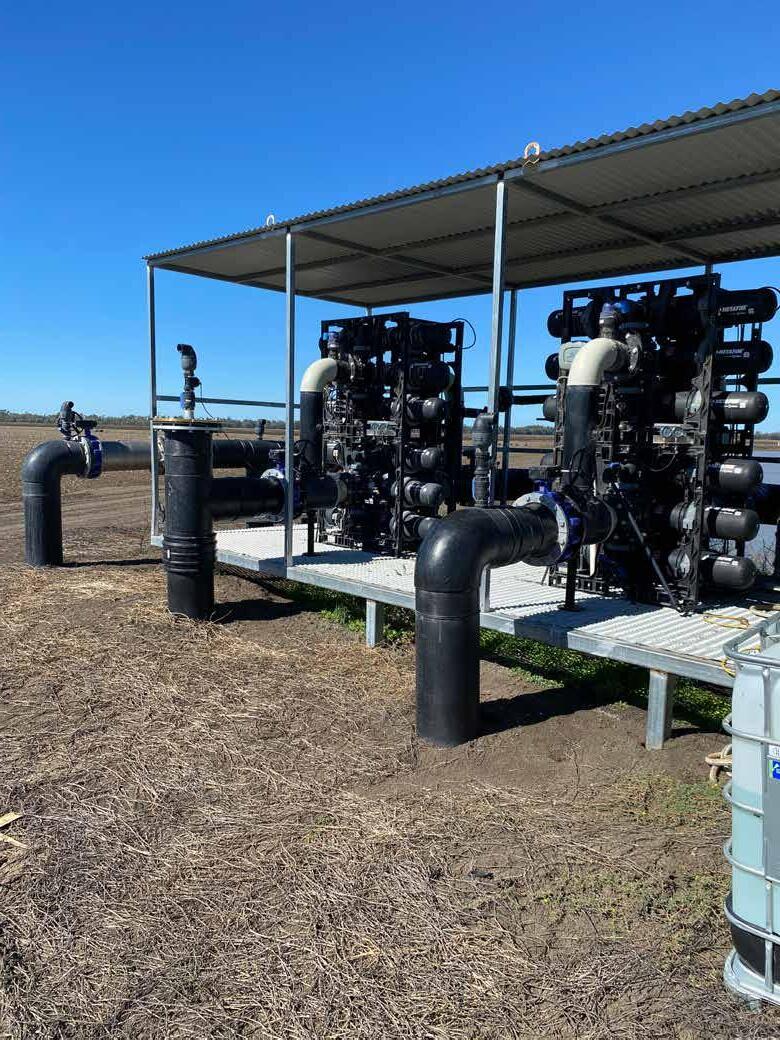

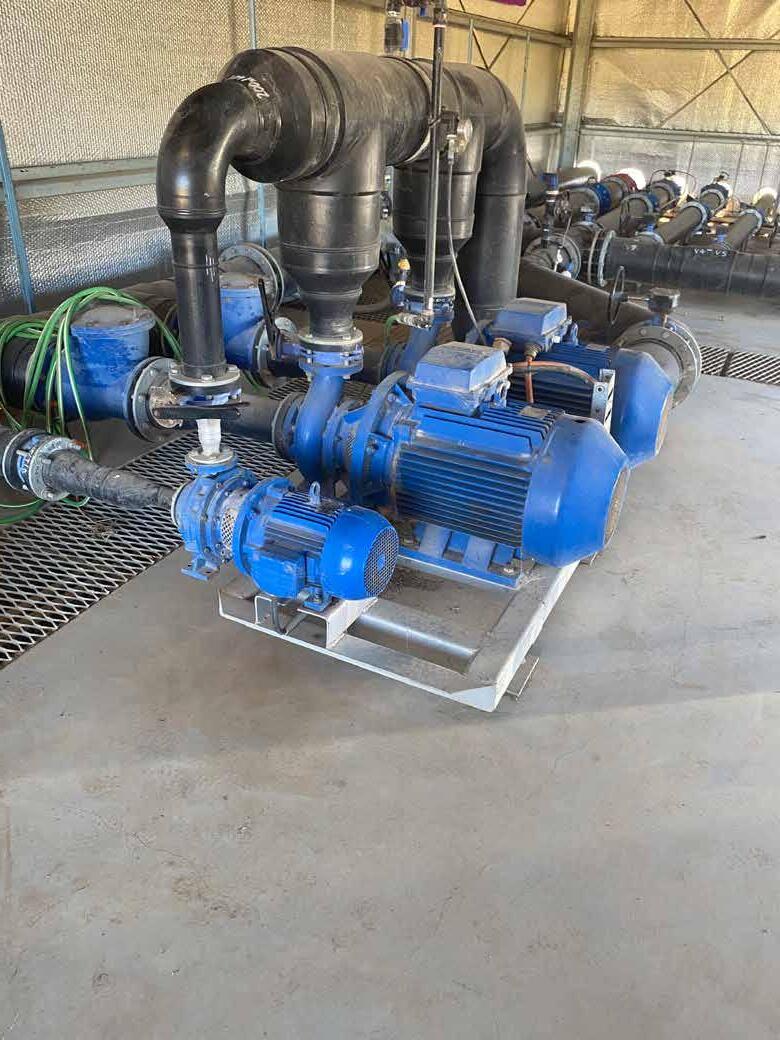

The expanded irrigation system has significantly boosted the orchard's capacity, ensuring water is delivered more efficiently while reducing energy costs.
Looking ahead, Greg and his team are now addressing a critical challenge: the escalating cost and labour associated with repairing infrastructure damaged by machinery and wildlife, including kangaroos, pigs, and cockatoos.
To tackle this, they are transitioning parts of the orchard to subsurface drip irrigation.
Some of the original driplines installed in 2001 are due for replacement. "All the research shows us subsurface is the most economical way forward for maintenance," Greg explained. "Once it’s buried, it cannot get damaged."

The GIS/GISO’s highly efficient and flexible construction makes it ideal for:
• Water Supply
• Pressure Boosting
• Irrigation
• HVAC applications
Standard construction is cast iron body, stainless steel impeller and stainless steel shaft. Other casing and impeller materials are available on request.

GIS/GISO series back pullout, foot mounted centrifugal pump is designed in accordance with ISO 2858.
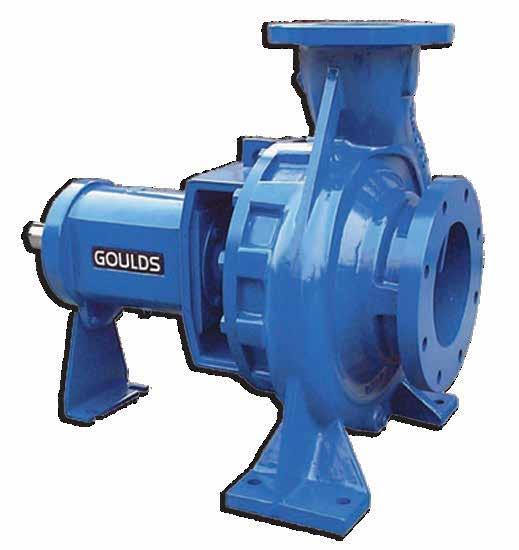
Contact us today to see how the Goulds GISO/ISO pump range can assist with your water requirements.
• This article explores case studies from Queensland farms, highlighting common inefficiencies in irrigation systems and practical solutions to improve pump efficiency.
• Key performance metrics, such as electricity consumption per ML (kWh/ML) and per ML per metre of lift (kWh/ML/m head), provide benchmarks for assessing and improving pump performance.
• Regular maintenance and monitoring can help detect issues early, reduce operational costs, and extend the lifespan of irrigation equipment.
• Upgrades to pipe networks, including replacing undersized or fouled pipes, can reduce energy consumption, improve water flow, and minimise friction losses.
• Optimising pump selection, sump design, and scheduling ensures that irrigation systems operate efficiently and cost-effectively.
• Insights from these audits demonstrate how growers can achieve energy savings, improve water management, and improve farm profitability.
The Queensland Farmers’ Federation (QFF) is driving energy efficiency on farms through the Queensland Business Energy Savers Transformation Program (QBEST) which is funded by the Queensland Government. As part of this initiative, Phil Szabo, director of Saturn Engineering Group conducts pump energy audits and provides growers with detailed reports based on Australian standards. These insights are shared through case studies on the QFF website, offering practical advice to improve pump efficiency.
This article highlights Phil’s findings, including key performance metrics, real-world case studies, and recommendations for irrigation professionals and growers.
A citrus farm with 37,945 trees relied on two identical Southern Cross 150x125-400 pumps connected in series to manage its irrigation. One pump was located on the riverbank while the other was at the top of the riverbank. The farm operated with 11 different irrigation schedules, each corresponding to a specific area of the property. For this analysis, three schedules were selected to represent varying static lift conditions: the lowest, middle, and highest lift (furthest from the pump).
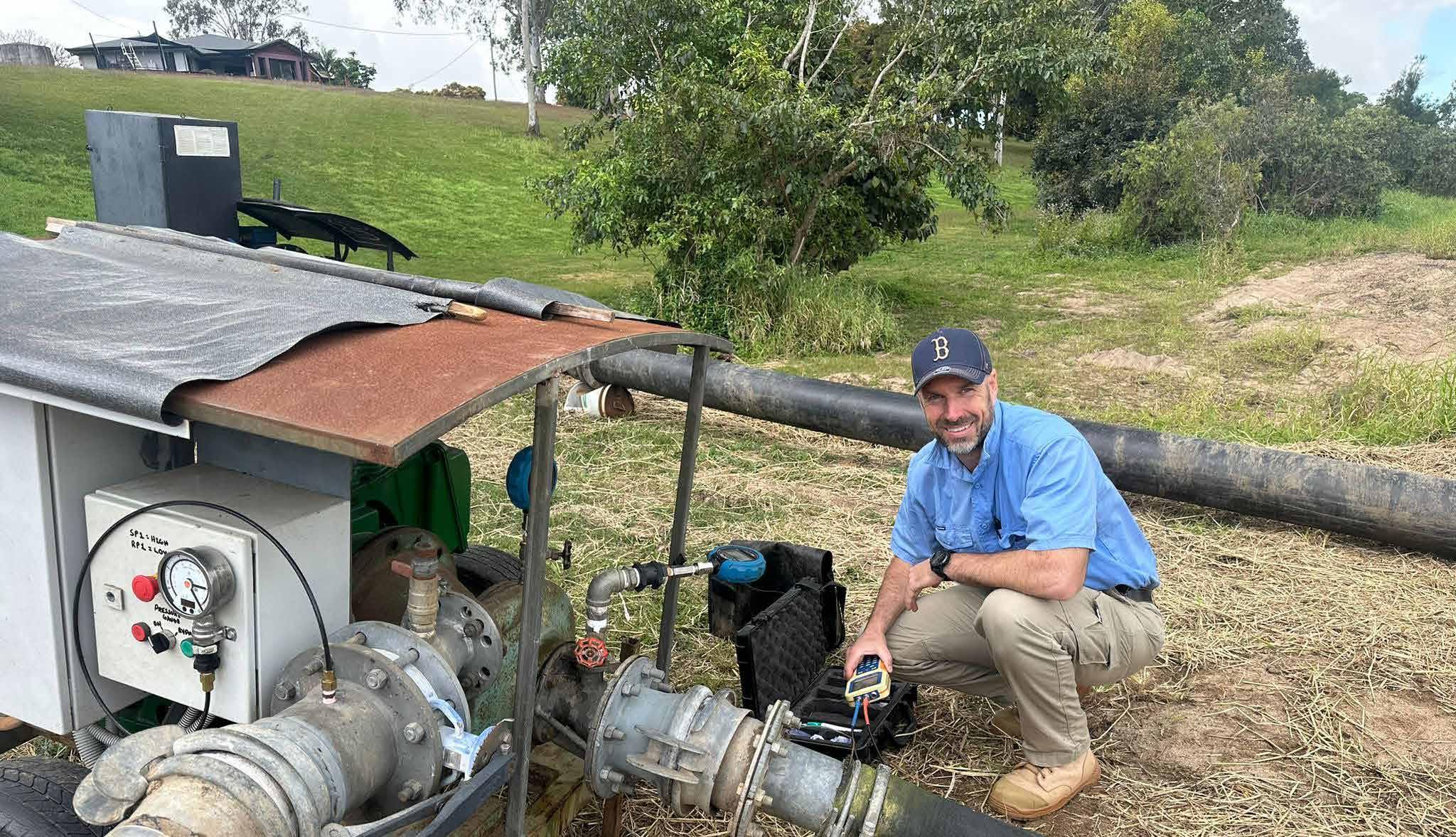
The audit revealed significant inefficiencies in the system:
• Pump efficiency ranged from 44.2 per cent to 54.3 per cent, which is suboptimal.
• Energy usage was high, ranging from 5.31 to 6.52 kWh/ML/m head.
• The farm was on an incorrect tariff (Tariff 45), which eliminated peak demand charges but imposed higher network fees.
To address these issues, Phil proposed the following improvements:
1. Certified Irrigation Design (CID) consultation: Engaging a CID was recommended to reassess and optimise the irrigation setup. This process included reviewing the pump selection and overall system design.
2. Install a variable speed drive (VSD) and conduct correct pump selection process: While this is a significant undertaking and outside of the scope of the energy audit, it was recommended as part of optimising the system.
3. Optimise pump usage: Working with a CID, Phil found that using just one of the pumps at 1700 RPM could effectively handle the irrigation needs for Schedule 1.
4. Solar Installation: Installing a 100kW solar system could offset energy consumption (see Figure 1). Based on current interval data:
• The farm consumes 357,000 kWh annually.
• Solar could offset 122,818 kWh annually, reducing grid imports to 234,851 kWh.
• Approximately 55,000 kWh would be exported to the grid, though the farm would not benefit from a feed-in tariff as they remain a SAC (Standard Asset Customer) Large Business customer.
The combination of improved pump efficiency, tariff adjustments, and potential solar integration provides a pathway to substantial cost savings and energy optimisation for the citrus farm.
Cost-benefit analysis for schedule 1: By focusing on irrigation schedule 1 and assuming irrigation over a 12-month period, the analysis showed that the grower could make significant improvements:
• Pump efficiency improved to 79 per cent.
• Energy usage dropped to 3.76 kWh/ML/m head.
• Electricity consumption was reduced by 92,018.5 kWh (25.7 per cent), and demand decreased by 27.9 kW. This led to annual savings of $19,737.78.
• Switching from Tariff 45 to Tariff 44 resulted in an additional $9,560.76 (7.4 per cent) savings per year.
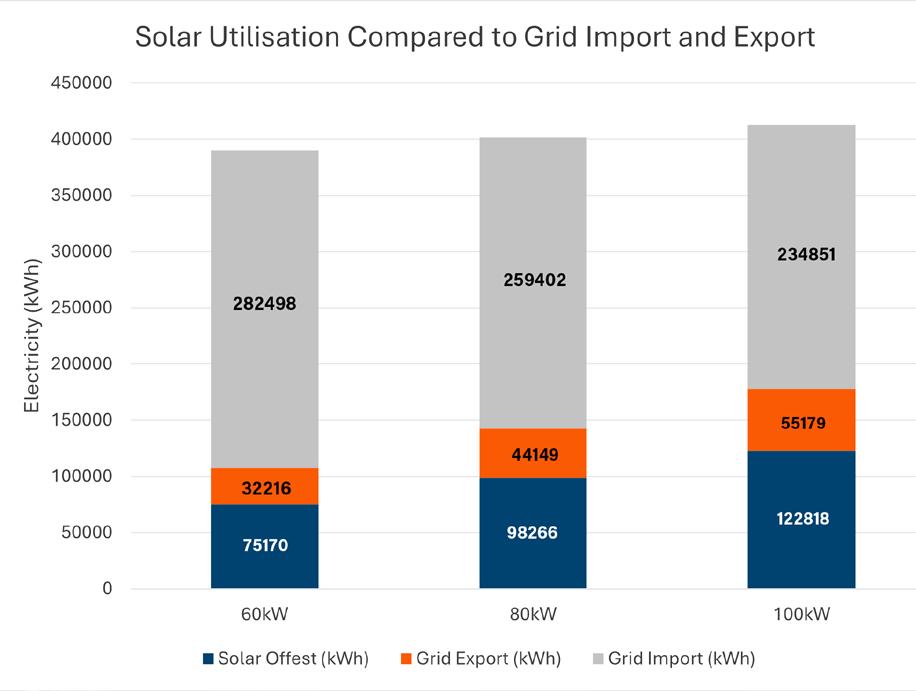


To monitor and improve pump efficiency, two key indicators are useful:
1. Electricity consumption per ML (kWh/ML): This is easily obtained and is useful for growers to track performance of an individual pump year-on-year. However, it does not consider the total dynamic head against pump performance.
2. Electricity consumption per ML per metre of lift (kWh/ML/m head): This figure provides a benchmark for pump efficiency or energy use and can be used to compare any pump across any industry.
Phil recommends a target electricity usage of 3.80 kWh/ML/m head for electric motors and 0.8 L/ML/m head for diesel engines.
At this cotton farm, four 26HBC-40 China pumps were used to lift tailwater into either a storage dam or an irrigation channel. The system included three electric motors and one diesel engine. For the audit, Phil focused on evaluating the performance of one of the electric pumps.
The electric pump was found to be performing relatively well. The pump efficiency was 80.2 per cent, which is acceptable for this type of setup, and the energy usage rate was 4.15 kWh/ML/m head.
The existing suction pipe, at 660 mm, was small, resulting in a high water velocity through the suction pipe. Phil says it would normally be advisable to increase the diameter to 1050 mm to reduce the velocity and suction friction losses. However, in this case, a larger diameter pipe would have reduced the total dynamic head and moved the duty point away from the best efficiency point on the pump curve. The biggest problem with such a small pipe on a 26HBC-40 is it leads to cavitation. A combination of short length of pipe and a flooded suction meant it was not necessary to replace the
660 mm suction pipe. This is not a common result for 26HBC40 China pumps, they generally require much larger suction pipes to reduce friction losses and eliminate cavitation.
Phil’s main recommendation for this farm was to replace one electric pump with a diesel engine. This would help the farm avoid peak demand charges, which are a significant cost for electric pumps. The analysis suggested that if the pump is operated for less than 256.8 hours per month, the diesel pump would be more cost-effective, as shown in Figure 2. For higher monthly usage, the electric pump would remain the more economical option.
A sugarcane farm with 207 ha under irrigation relied on a single Southern Cross 80 x 65-280 pump to supply water through laterals, travelling guns, and flood irrigation. The pump was powered by a 45 kW motor and supported by a 30 kW solar system. While the farm had two additional pumps connected to the same National Metering Identifier (NMI), this assessment focused solely on the main pump, which has been in operation for 25 years.
The audit revealed mixed findings regarding the pump’s performance:
• Pump efficiency was measured at 72.5 per cent, which is relatively good given the pump's age.
• Energy usage stood at 4.0 kWh/ML/m head, an acceptable rate.
• However, the system experienced significant issues with friction loss, measured at 68.9 m, and water flow rate losses, calculated at 14.2L/s (46 per cent). These inefficiencies suggested that improvements to the pipe network were needed.
To address these issues, Phil recommended the following actions:
1. Upgrade pipe network: Replacing 4.7 km of main and sub-pipelines with larger diameter pipes (increasing from 150 mm to 200 mm) would reduce the total dynamic head loss from 98.5 m to 49.5 m. This would:
• cut energy usage from 393.6 kWh/ML to 197.9 kWh/ML, a significant reduction
• improve water flow rates and reduce friction losses
• save water by minimising leaks and inefficiencies in the system.
2. Adjust pump operations and tariff management: The farm alternates between classification as a SAC Small or SAC Large customer, depending on annual electricity usage. By upgrading the pump, the grower could restrict irrigation to solar-producing periods, which, while slightly reducing application efficiency, could keep annual electricity usage below 100 MWh. This threshold ensures the farm remains classified as a SAC Small customer and qualifies for a feed-in tariff on solar exports.
1. Pump maintenance. Regular pump maintenance is critical. However, monitor its performance by calculating kilowatt-hours per megalitre (kWh/ML). This can be done by dividing the electricity bill by the water usage. If this figure starts to increase, it is worth consulting a CID who can help determine whether the pump can run for another few years or if immediate maintenance will pay off within three to five years.
2. Pipe network maintenance. Over time, fouling can occur inside pipes, dramatically increasing friction losses and reducing pump performance. Even a thin layer of buildup can have a significant impact. Ensuring that pipes and the water flowing through them are clean can prevent major issues. For example, a water loss of 46 percent, as seen in one audit, represents a substantial inefficiency and underscores the importance of pipe maintenance.
3. Pump selection. Selecting the right pump is crucial once the pipe network has been optimised. In cases
While replacing long sections of pipeline involves a substantial investment and may result in a long payback period based on energy savings alone, the broader benefits can sometimes justify the cost. Potential reductions in labour expenses, water savings, and improvements in crop production may help to offset the initial outlay. When these factors are considered, the overall payback period can become more reasonable, making such upgrades worthwhile in some situations.
like the citrus and sugarcane farms, improper pump selection resulted in suboptimal efficiency. Pumps must be carefully designed and chosen to match the specific irrigation needs of the system. Incorrect pump selection leads to higher energy costs and inefficient operation.
4. Sump design and suction pipes. Proper sump and suction pipe design is vital, even though this issue wasn’t observed in these case studies. Low water velocities in the sump are key, with a recommended limit of 0.3 m/s to minimise energy use. For perspective, 1 m³ of water weighs one tonne, so any unnecessary movement or directional changes waste energy. Large suction pipes help maintain low velocities and prevent issues like cavitation.
5. Cavitation and air entrainment. Cavitation occurs when water pressure drops so low that it vapourises, forming vapour pockets that implode and damage the pump impeller. This is different from air entrainment, which happens when atmospheric air enters the pump. While air entrainment can cause imbalances and vibration, it does not lead to the physical damage caused by cavitation. Preventing both issues requires careful design and operation of the system.
6. Pump operation and scheduling. Effective scheduling can reduce energy costs while maintaining water delivery. For example, one grower asked whether to run two pumps at 1200 RPM or a single pump, and at what speed. Analysis showed that running one pump at 1400 RPM provided the same water delivery at a lower cost than operating two pumps. Matching pump operation to irrigation schedules ensures optimal performance and cost-efficiency.
Acknowledgement. This article is based on a webinar presented by Phil Szabo from Saturn Engineering Group. You can view the webinar on the Queensland Farmers’ Federation website





• Internal pipeline roughness as small as 0.2 mm can reduce pipeline efficiency by up to 20 per cent and cause pumps to operate far from their best efficiency point (BEP).
• Pipeline performance degradation must be anticipated during the design phase to ensure long-term sustainability and efficiency.
• Derating Hazen-Williams C values during design is critical, particularly for smaller pipes, which experience greater performance losses over time.
• Pigging pipelines may improve performance but rarely restores them to their original condition if degradation has hardened over time.
• It is a good idea to conduct water quality tests at the start of projects to identify potential degradation markers, such as high iron content, or high turbidity.
Have you ever inspected the inside of a pipeline for internal roughness, suspecting it might be causing performance losses, only to find the pipe seemingly ‘clean’?
It may surprise you to learn that an internal roughness of just 0.2 mm – imperceptible to the naked eye – can reduce the efficiency of a 200 NB pipe by 15 per cent and cause a pump to operate far from its best efficiency point (BEP). In an 80 NB pipe, the same roughness can degrade pipeline performance by 20 per cent.
This is a double whammy: high head loss plus off-BEP pump efficiency, leading to as much as a 25 per cent increase in specific energy – even with a brand new pump. Pipeline performance degradation is the elephant in the room of pumping system efficiency. To make a pumping system truly sustainable, this issue must be anticipated during the design phase and accounted for in the system’s parameters. If your hydraulics calculations for a pump selection don’t include pipeline degradation, you’ve missed the elephant in the room, and your pumping system can never be sustainable.
So, how can you plan for pipeline degradation and what steps can you take to address it?
A crucial strategy is to adjust the Hazen and Williams C value, which measures pipe smoothness, to account for future degradation. For new pipes, the standard C value
is 150, but it’s important to derate this value – typically to around 125. The exact adjustment depends on the pipe diameter, as smaller pipes experience much larger C value deterioration over their life than larger diameter pipes. For pipes between 25 NB and 80 NB, derating to a C value of 100 may be more appropriate
It is common to see pipelines with sub-par C values as shown in the following case studies. In most cases, pipeline pigging was used in an attempt to restore the pipeline’s performance. Unfortunately, in most cases, if degradation is allowed to progress too far, even pigging cannot fully restore performance.

Inside a degraded pipeline: even minor roughness, which cannot be seen, can significantly impact flow efficiency and pumping performance over time.
In 2000, A 10 km x 450 NB rising main carrying recycled water from the Christies Beach Sewage Treatment Plant deteriorated significantly within its first 18 months of operation. This led to a 15 per cent reduction in the pumping system’s flow rate capacity during that time.
Tests on the pump showed that its efficiency had not changed. However, tests on the pipeline revealed a reduced C value of 135, indicating increased pipeline friction. This friction caused the pumps to operate higher on their pump curve, reducing the overall output by 15 per cent.
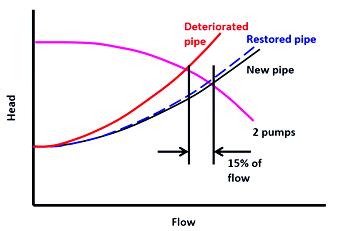
FIGURE: A 10 km 450 NB PVC rising main performance deteriorated so much in 18 months that pump output decreased 15 per cent. Pigging the pipe early in its life restored pipeline performance to like new.
This is a good news story. Pigging the pipeline restored the pump capacity by physically removing the biofilm responsible for the increased friction. However, such success stories are rare. In most cases, deposits in pipes become permanent over time and cannot be removed unless frequent pigging is conducted from the start.
In 2014, a 1 km x 150 NB PVC rising main on a turf farm in NSW was tested after 15 years’ of service and found to have a significantly reduced C value of 80. The water source is the pristine Hawkesbury River.
Pigging the pipeline produced highly discoloured water, suggesting the presence of iron. However, the iron concentration was below the staining threshold, and the water quality appeared high with no turbidity, and so there were no visible markers for its presence. It is believed that the iron leached from a channel off the river that supplied the pump.
This is not a good news story. After pigging, the pipe efficiency only improved to a C value of 90, indicating that the pipe film had hardened over time and could not be fully removed. The pipeline was re-laid at great expense to overcome the problem.
See the video below.
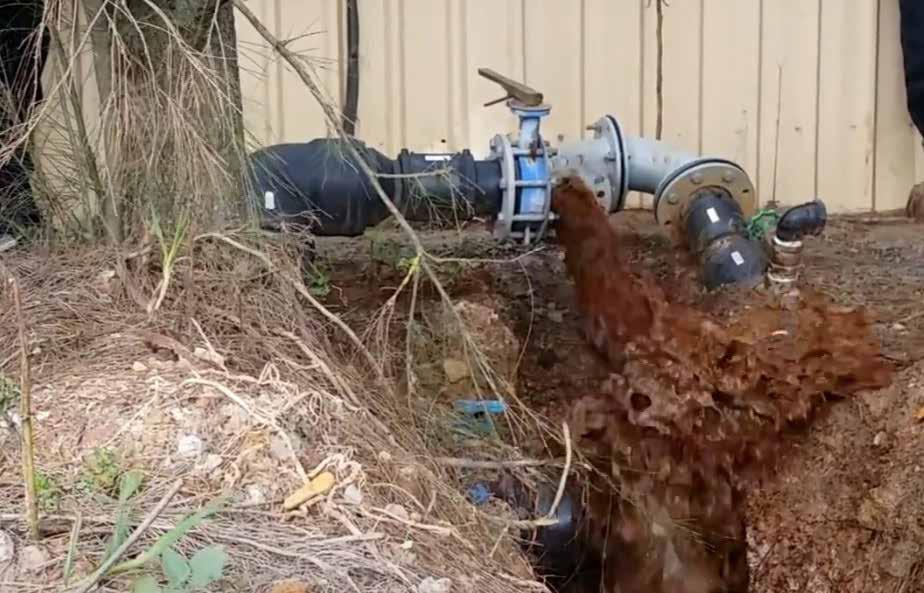
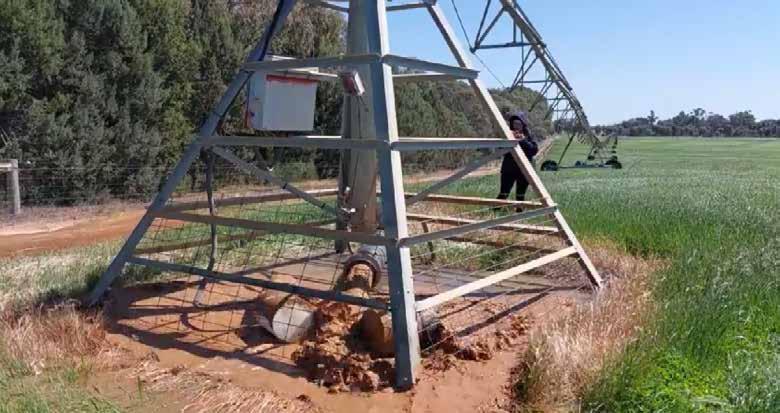
In 2024, a 20-year-old DN280 poly pipeline supplying a centre pivot in central Victoria was suspected of experiencing high head loss. Site tests confirmed a reduced C Value of 118. Pigging the pipeline improved the C Value to 126, but this modest improvement indicated that the silt accumulated over the pipeline’s lifetime had hardened, creating a permanent reduction in performance. This is not a good news story.
Ever heard of the ‘fudge factor’ when it comes pipeline design?
Fudge factors are used extensively in the irrigation industry as a makeshift safety buffer by those less familiar with proper pipeline design principles. While this approach increases the initial pumped head – resulting in lower system efficiency – it does compensate for a few years of normal pipeline degradation. However, after that period, the consequences become clear: pipeline systems operating well below their design capacity.
Where water quality issues exist, pipeline pigging offers some relief from performance degradation. However, if pipeline performance degradation is not identified early, it will be become permanent. While pigging may improve performance, it rarely restores the pipeline to its original condition.
The key question is: how do we identify water quality issues?
Conducting water quality tests at the start of a project can be invaluable for detecting potential markers of pipeline performance degradation. These markers include:
• recycled water
• iron content, even in small concentrations
• dam or river water with high turbidity.
However, it’s important to acknowledge that future potential pipeline degradation issues cannot always be predicted from water quality tests.
WATER PUMPING INSTITUTE offers an in-depth training course on pipeline design as part of its Sustainable Pumping training courses. This course is endorsed by Irrigation Australia for professional development and offers 2 CPD points. Included in the course are free issued software, which can measure C values in the field and calculate what capitalised power costs (Life Cycle Costing) are wasted because of underperforming pipelines.
• Carrick Hill, a 40 ha historic property in the Adelaide Hills, faced significant irrigation challenges due to its size, restricted Wi-Fi network, and heritage constraints.
• Traditional systems, including Bluetooth controllers and wired systems, were inefficient and impractical for this site.
• The property implemented Toro’s Tempus AG system, a battery-powered irrigation solution that uses LoRa technology for long-range, low-power communication.
• The system is controlled via a solar-powered 4G gateway, allowing remote management of 25 field controllers spread across the site, eliminating the need for wiring or Wi-Fi.
• Benefits include centralised control, flexible scheduling, quick response to issues, and significant time savings for staff, with plans to incorporate moisture sensors to optimise water use further.
• This case study highlights how modern communication technologies like LoRa can transform irrigation on heritage properties and other challenging sites.
Managing irrigation on large properties can be a challenge, not only on remote farms that lack Wi-Fi access but also for parks and gardens where government ownership often restricts access to existing networks. Traditional methods, ranging from manual watering to basic automated systems, often fall short in terms of efficiency and flexibility. Wired
systems can be expensive and difficult to install, while early wireless technologies like short-range radio frequency (RF) controllers struggled with reliability and range. These limitations left property managers relying heavily on labourintensive and imprecise practices.
Recent advances in communication technology, however, are transforming how irrigation is managed in these difficult locations. One key innovation is the development of LoRa (Long Range) technology, which enables long-distance, low-power wireless communication between devices. Emerging in the early 2010s, LoRa allows sensors, valves, and controllers to connect over distances of up to 15 km, making it ideal for large properties with diverse watering needs.
This article explores how these breakthroughs are being applied, focusing on a 40 ha historic property that recently implemented Toro’s Tempus AG battery-powered control system. The system uses LoRa technology to manage irrigation seamlessly without relying on Wi-Fi.
Built in 1939, Carrick Hill is a historic property in the Adelaide Hills. It sits on 40 ha of gardens, lawns and native forest. Until recently, the grounds manager, Ryan Kemp, managed the property’s irrigation with a combination of Bluetooth controllers along with a traditional AC wired system. The Bluetooth controllers allowed for wireless control but required staff to be within a short range of each device, making central management impractical. Meanwhile, the wired system provided more reliable control but presented
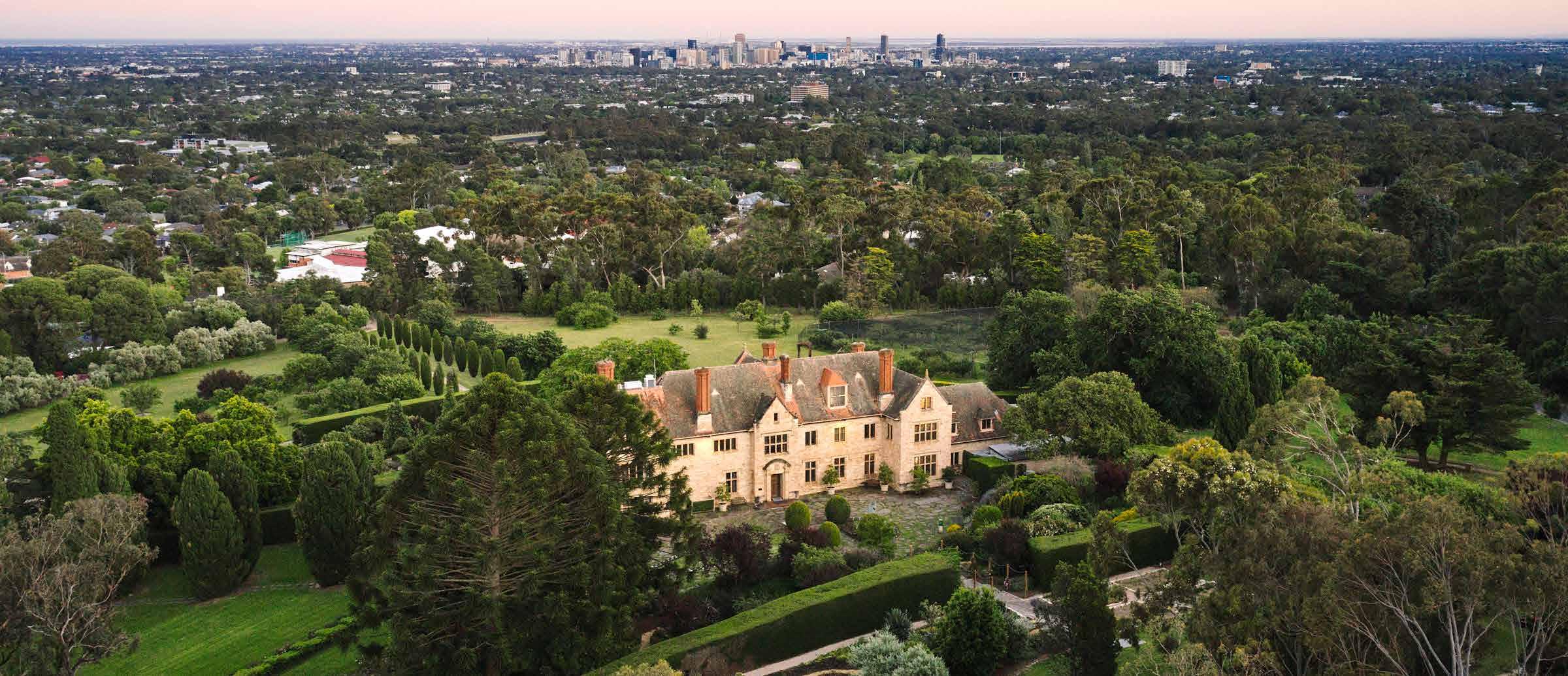
significant challenges: the logistics of installing and maintaining wiring across the site were complicated by its size, the public accessibility of the gardens, and the need to preserve the property’s historic character. Other challenges included:
• long distances between valves
• obstacles such as paths, buildings and streams
• dense vegetation
• no Wi-Fi access for the control system.
After discussing the property’s challenges with the team at Toro, Ryan decided to implement a Tempus AG battery powered control system. This system could manage irrigation across the site without requiring integration with the property’s Wi-Fi and can be easily retrofitted onto existing irrigation system components.
The Tempus AG system uses LoRa (Long Range) technology to provide a reliable, wireless irrigation management solution. At its core, a single solar-powered 4G gateway serves as the communication hub, connecting 25 field controllers across the property to a cloud-based system via the cellular network. The gateway communicates with the field controllers using LoRa, a low-power radio frequency technology that operates over distances of up to 15 km, enabling precise control of irrigation zones without the need for extensive wiring or Wi-Fi.
Each field controller can activate and manage valves or sprinklers based on preset schedules, real-time data from sensors, or manual inputs made through an intuitive app.
Ryan and his team, assisted by Toro, installed the system – a simple process requiring no tools, machinery or additional labour. The solar-powered 4G gateway was mounted with the included brackets onto the side of the groundkeeper’s shed, along with the solar panel. Controllers were then placed in each valve box across the property, which simply involved wiring the controller to the pre-installed DC solenoid coils on the valves.
A gateway is a device that acts as the central hub in an irrigation system, connecting local field controllers and sensors to external networks like the internet. In systems like Toro’s Tempus AG, the gateway uses LoRa (Long Range) technology to communicate with field devices over large distances and a cellular 4G connection to link the entire system to the cloud. This enables property managers to monitor and control irrigation remotely through an app or web platform. Essentially, the gateway serves as a translator and dispatcher, bridging local devices and the internet, making centralised and efficient irrigation management possible even on remote or sprawling properties.
The IP68 waterproof and dust-proof controllers are positioned within the site’s irrigation valve boxes, allowing easy access to change batteries.

The new system has significantly streamlined operations by enabling remote monitoring and adjustments, addressing limitations of traditional wired or short-range wireless systems. Programmed to run on a time-based schedule, the system allows irrigation to be completed early in the morning before the site opens to the public, avoiding disruptions or inconvenience for visitors. The grounds mangers can easily adjust irrigation times, water budgets, and application rates using a PC or mobile phone, providing flexibility to respond to changing plant needs and weather conditions.
Ryan notes that remote access has also proven invaluable for quickly isolating stations in the event of issues like blowouts, especially when staff are off-site during weekends. The staff also use the water budget feature frequently, particularly during the summer months, to fine-tune water application rates.
Ryan has also found that being able to set schedules from a central interface has saved significant time, and features like low battery alerts help ensure the system runs smoothly.
With expansions to the Carrick Hill grounds planned, the system can easily be expanded with additional gateways and controllers. While the site currently operates without sensors, Ryan is keen to incorporate moisture sensors in the future.
• Traditional pump shed layouts with vertical filters create safety and maintenance challenges with narrow walkways, ground-level manifolds, and poor accessibility.
• A collaboration between Rivulis and Exact Contracting led to the development and implementation of a safer, more accessible layout using horizontal filters, inspired by an industrial site in Spain.
• Horizontal filters address safety issues by eliminating gantries and walkways, with screens at chest height for easier servicing.
• This innovative layout was successfully implemented in 2021 for an almond orchard project in northern Victoria, featuring recessed pipework and the Rivulis F3340 Pro horizontal filter.
• The project delivered a safer, more practical pump shed environment without increasing costs, showcasing the benefits of innovative design.
Before entering the irrigation industry, Tim Lewis worked as a farm manager, where he experienced first-hand the challenges of servicing large filters in cramped, uncomfortable pump sheds – often without platforms or gantries.
“We’d be climbing over large manifolds and standing on top of filters on steelwork in wet conditions,” Tim said. “There are obvious workplace health and safety risks with this, and comfort and accessibility matter too. Uncomfortable working conditions and infrastructure that is hard to access deter people from doing the job properly. If you make servicing easy, it gets done correctly and on time.”
Now a district sales manager at Rivulis, Tim was determined to address these issues by rethinking how pump shed environments could be designed for greater safety and efficiency.
When Tim joined Rivulis in 2014, he initially focused on selling vertical, or angle, filters, which is what the market wanted. However, he saw opportunities for improvement in pump shed layouts and workplace health and safety (WHS) through a different approach to filtration.
Traditional vertical filters are normally accessed by narrow walkways at heights, while large manifolds sit at ground level in the pump shed, creating maintenance hazards. Platforms are often only installed on one side of the filter, meaning
workers must reach over the infrastructure when performing maintenance, which makes for poor WHS practice. Tim realised that these issues could be addressed by using horizontal filters instead.

Traditional vertical filters are accessed by narrow walkways at heights, while large manifolds sit at ground level in the pump shed, creating maintenance hazards.

Platforms are often on only one side of a vertical filter, so workers must reach across when conducting maintenance.
However, horizontal filters, typically used only on smallscale farms, posed a significant challenge: most models were not designed to handle the large volumes of water required for high-flow irrigation systems. At the time, the largest available horizontal filter in Australia featured a screen size of 6000 cm², requiring around 24 units to manage flow rates of up to 1000 L/s.
“An industrial site in Spain gave me the idea,” Tim said. “The filters were permanent fixtures with manifolds cemented in. I thought this design could be adapted to something a bit more serviceable, and with a pit that also carries flush lines and cable trays.”
This visit sparked Tim’s vision for a more accessible and safer pump shed layout. “By rethinking traditional approaches, I realised we could prioritise safety and accessibility without compromising efficiency,” he said. “This led to a system design that not only works better but creates a far more practical working environment.”
Rivulis’s filtration supplier also supplied the Rivulis 3340 Pro, a large horizontal filter designed for higher flow rates. Collaborating with engineer Shaun Matschoss from Exact Contracting, Tim developed concept plans for a pump shed layout incorporating these filters. The design included recessed pipework in floor channels, significantly improving accessibility and complying with WHS standards.

The industrial site in Spain with permanent filter fixtures with cemented manifolds that inspired Tim to use horizontal filters in high-flow irrigation systems. Tim adapted this design for improved serviceability and safety in irrigation projects.
According to Tim, this novel pump shed configuration offers several benefits:
• No raised walkways are needed, allowing technicians to work at ground level.
• Screens are positioned at chest height, making them easier for one person to remove and service.
• Gantries are unnecessary for maintenance.
• Shed heights can be much lower.
• The workspace remains clear, so workers do not need to climb over pipework.
This design also reflects Rivulis’ preference for screen filters over disc filters, which have the advantages of:
• a smaller footprint
• simpler operation
• fewer moving parts
• reduced flush water usage during cleaning.
The team initially encountered resistance from clients, who were hesitant to adopt a concept so different from the norm. However, the opportunity to trial the design came in 2021 when the Rivulis team worked with Exact Contracting on a large project in northern Victoria, where a former dairy farm
was being converted into an almond orchard. A critical part of the project was the filtration system, which needed to handle flow volumes of up to 800 L/s.
Shaun redesigned the pump shed from the original tender specifications and submitted a non-conforming design as well as the original specification. In the new design, the mainlines were placed in a recessed pit beneath the shed floor, covered with grating for easy access during maintenance. This configuration allowed all filters to be positioned at chest height.
The original tender specifications included a vertical filter, but Tim proposed the Rivulis F3340 Pro horizontal filter as a more efficient solution that also met the budget. The added cost of laying pipework in the pit was offset by savings from eliminating the platform needed for vertical filters and the reduced shed height.
Shaun said, “The clever design innovations associated with the ultimate build not only provided for an improved safety and maintenance point of difference, but on this project, it enabled us to provide the client with a better value proposition compared to the initial design provided.”
“This project really shows what’s possible when you rethink traditional approaches.”

Tim said the construction was straightforward, and for a competitive cost compared with a standard setup, the client now has a custom system that provides a far safer and more efficient working environment.
“Technicians no longer need to work at heights or climb on steelwork. We’ve delivered a system that not only meets the client’s needs but also creates a safer, more practical working environment,” Tim said.
“This project really shows what’s possible when you rethink traditional approaches.”
In an era where climate unpredictability and population growth are reshaping agriculture, the 2024 Irrigation Australia Conference and Exhibition provided a timely opportunity for nearly 1,400 delegates to explore the latest advances in irrigation.
As well as addressing critical topics like sustainability, water management and the role of irrigation in global food production, this year's event also focused on fostering delegate interaction and fun. With special activities throughout the exhibition and exciting new awards recognising industry success, the conference balanced serious discussions with opportunities for connection and celebration.
Throughout the conference, a series of workshops and training sessions provided valuable insights into irrigation management, cutting-edge technologies and sustainability, as well as opportunities to brainstorm and collaborate.
The conference kicked off with a Welcome to Country by Darug Elder Aunty Peta Strachan, followed by a memorable performance by the Jannawi Dance Clan.
Dr Anoulak Kittikhoun's keynote address on global water trends and the work of the Mekong River Commission set the tone for the event, focusing on sustainable water management practices.
A standout panel session, titled ‘What has irrigated agriculture/horticulture ever done for us? And what is its role into the future?’ featured Ann Gardner from Dairy Victoria, Robbie Sefton from Seftons, Andrew Kneebone from Tasmanian Irrigation, Vanessa Winning from Irrigation New Zealand and Michael Pisasale from Murray Irrigation Limited.
The panel discussed the role of irrigated agriculture in food production and its importance to rural communities and their economies. The conversation touched on the environment, technology, climate change, education, policy, social licence, and more.
Exhibition highlights
This year’s exhibition, which was attended by 79 exhibitors, showcased the latest products and services from leading technology companies, manufacturers, and service providers, both local and international.
One of the highlights was the Garry Time Challenge – a lively competition where participants raced to assemble a model robot using pipes and various components as quickly as possible.






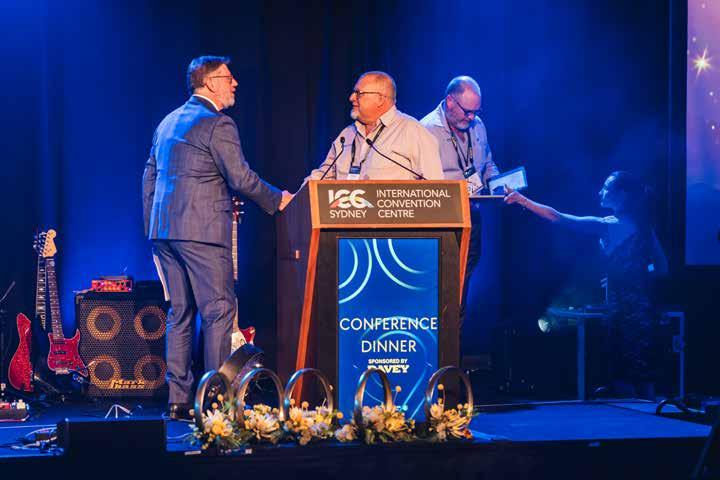

The Interactive Zone was another success, allowing exhibitors to present their innovations directly to attendees. PLASSON Australia won the Best Interactive Zone Presentation for their exciting showcase of the 'Plassaddle.'
The Scavenger Hunt, which encouraged networking among exhibitors and delegates, was also a popular event.
The social events were a highlight, especially the Conference Gala Dinner, sponsored by Davey Water Products. Guests enjoyed an outstanding three-course meal and danced the night away to live music by ClassicOz. Jason Banks, Co-CEO of TIACS, delivered an inspiring keynote on mental health, which struck a chord with many in the audience.
Several prestigious industry awards were presented throughout the evening, including the Maclean Iedema Award, which honours individuals who have made significant contributions to the irrigation industry. Ben Chapman and Chris Thompson were recognised for their outstanding achievements and decades of dedication to advancing the sector.
Another key award was the Life Membership Award, presented to Andrew Ogden for his exceptional service to Irrigation Australia. Andrew has been a driving force in the industry for over a decade, contributing his knowledge and leadership to various sectors, from mining to agriculture. His commitment to sharing expertise and supporting the growth of the industry was celebrated through this well-deserved recognition.
In addition, the Water Efficiency Management Awards were presented across several categories. Steven Boyer from the City of Perth was recognised for his innovative irrigation management approach, which saved significant amounts of groundwater. Inform Ag took home the small business award, while City of Cockburn won in the large business category for their cutting-edge water management solutions.
Monash University was awarded the Innovation in Sustainability Award for their water harvesting systems across multiple campuses, and Sunwater and Woodfield Engineering were honoured for their innovative approach to safety in irrigation infrastructure.
The Women in Water breakfast, which kicked off day two of the conference, was a powerful event celebrating the contributions of women in the water management and irrigation sectors. Hosted by Hon Karlene Maywald, former South Australian Minister for Water Security and Chair of the National Water Commission, the event featured an inspiring conversation with Narges Zohrabi, Associate Professor of Water Services and Engineering, on the challenges and rewards of being a woman in water.
The breakfast was followed by a panel session that explored strategies for empowering women in the sector. Speakers included Georgia Brown from AGB Farming, Pat Rafferty from Yarra Valley Water, Natalie Morris from Superior Irrigation Services and Vanessa Winning from Irrigation New Zealand, who shared their experiences and insights, emphasising the importance of diversity in driving innovation and equality within the industry.
The conference concluded with two insightful keynote addresses and a closing ceremony. Dr Kathryn Wynn discussed the challenges and opportunities for irrigated agriculture in the coming decades, while Brian Walker, the ‘Retail Doctor,’ provided insights on the changing face of retail and how businesses can stay ahead in an evolving market.
Irrigation Australia extends heartfelt thanks to everyone involved, from exhibitors to sponsors and volunteers. The next steps for the organisation include refining the interactive sessions and focusing on increasing engagement with young professionals at future smaller-scale events.

Irrigation Careers is your ultimate destination for forging a rewarding career in the irrigation industry! Regardless of what stage you’re at in your career pathway, this platform is designed to help you thrive in a field dedicated to sustainability and innovation
Explore a diverse array of career opportunities
Get inspired with career testimonials from experienced professionals


Ready to kickstart your journey in the irrigation industry?
The Irrigation Insights - Induction Course is a free online learning resource, designed as the ultimate introduction for newcomers
Offering a comprehensive overview of the industry, this course is the perfect starting point for those exploring career options, gaining work experience, or looking to onboard new employees
Learn more about Irrigation Australia's nationally recognised Training & Certification programs
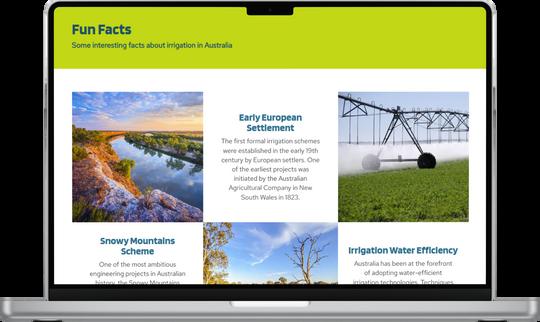
Discover fun facts about the irrigation industry






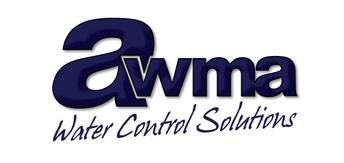

AWMA WATER CONTROL SOLUTIONS BACCARA GEVA AUSTRALIA

BROWN BROTHERS ENGINEERS AUSTRALIA


CHINADRIP IRRIGATION EQUIPMENT CO., LTD



BATESCREW PUMPS & VALVES BAUER GMBH AUSTRALIA BERMAD WATER TECHNOLOGIES


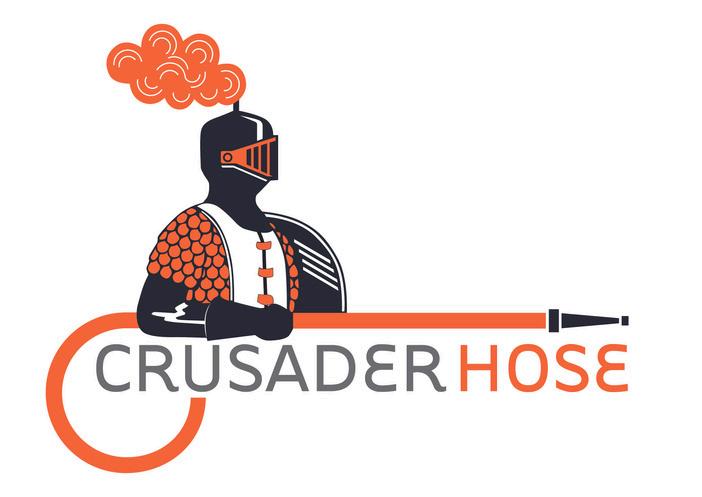

DAVEY WATER AUSTRALIA


FRANKLIN ELECTRIC FUZHOU ARTHAS FLUID EQUIPMENT TECHNOLOGY








H.T-BAUER WATER & AGRICULTURAL MACHINERY & ENGINEERING

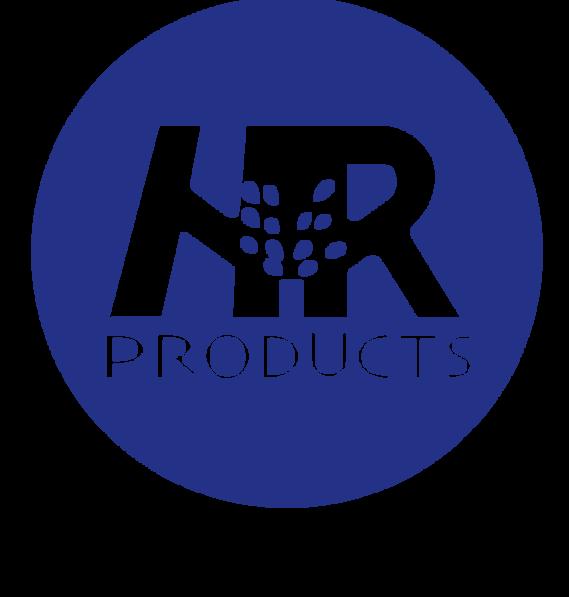




INFORM AG

GRUNDFOS PUMPS

LAND F/X


IRRIGATION COMPONENTS AUSTRALIA

LINGXING IRRIGATION TECHNOLOGY COMPANY LORENTZ AUSTRALIA




IRRIGEAR

KISTERS INSTRUMENTS


KINGSPAN WATER & ENERGY PTY LTD






AUSTRALIA NINGBO SINO TECH & DELP CO., LTD

NINGBO INNOVATO CONTROL EQUIPMENT CO., LTD PIPE COUPLINGS A/ASIA







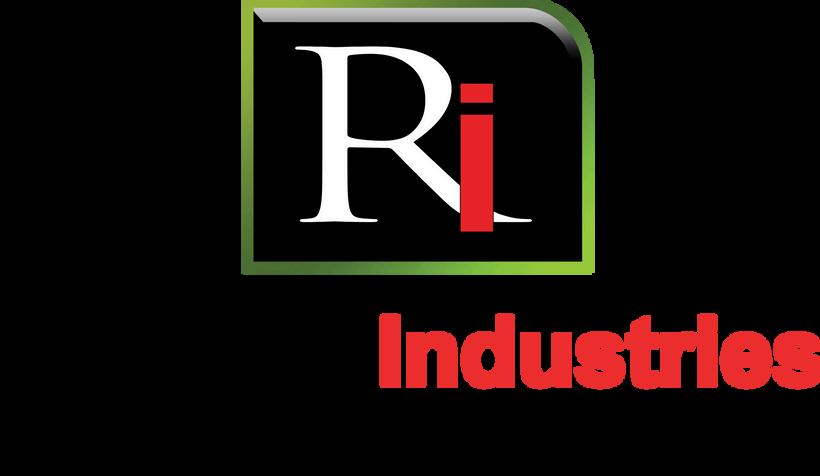



















Have you visited the Careers section of our website yet? It’s packed with resources to inspire and guide those interested in irrigation careers, with new content and features being added regularly.
Here are some highlights:
•Introducing Irrigation Insights: A free online short course offering industry newcomers the basics of water and irrigation, perfect for those exploring career options.
•Employers Section: Currently showcasing our Irrigation Futures sponsors, this page will soon feature a job board and give more employers a platform to connect with job seekers.
•Testimonials: Short, engaging videos from industry professionals sharing their career journeys, job roles, and passion for irrigation.
•Study Opportunities: A growing collection of courses from Irrigation Training Australia and other providers, ranging from beginner to advanced levels. New training programs will launch in early 2025, with government funding available for some courses (depending on location).
Have ideas for content or want to contribute? Contact Naomi Carragher at naomi.carragher@irrigation.org.au
Visit our website today and explore the opportunities waiting for you in the irrigation industry!
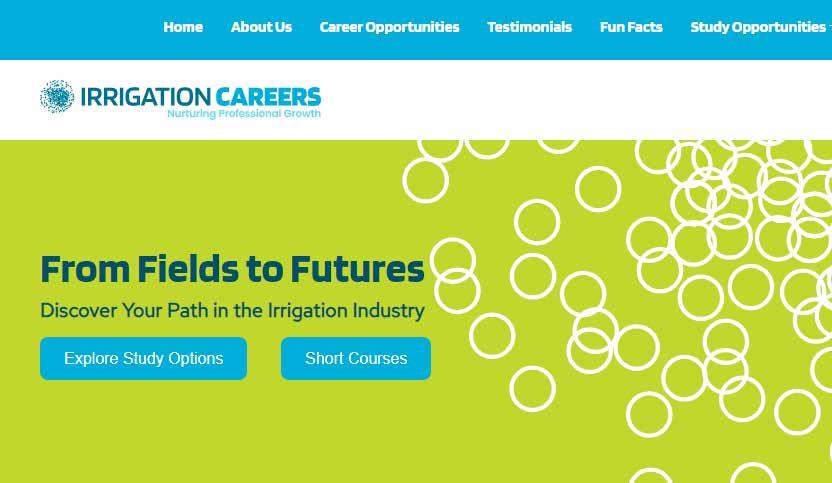
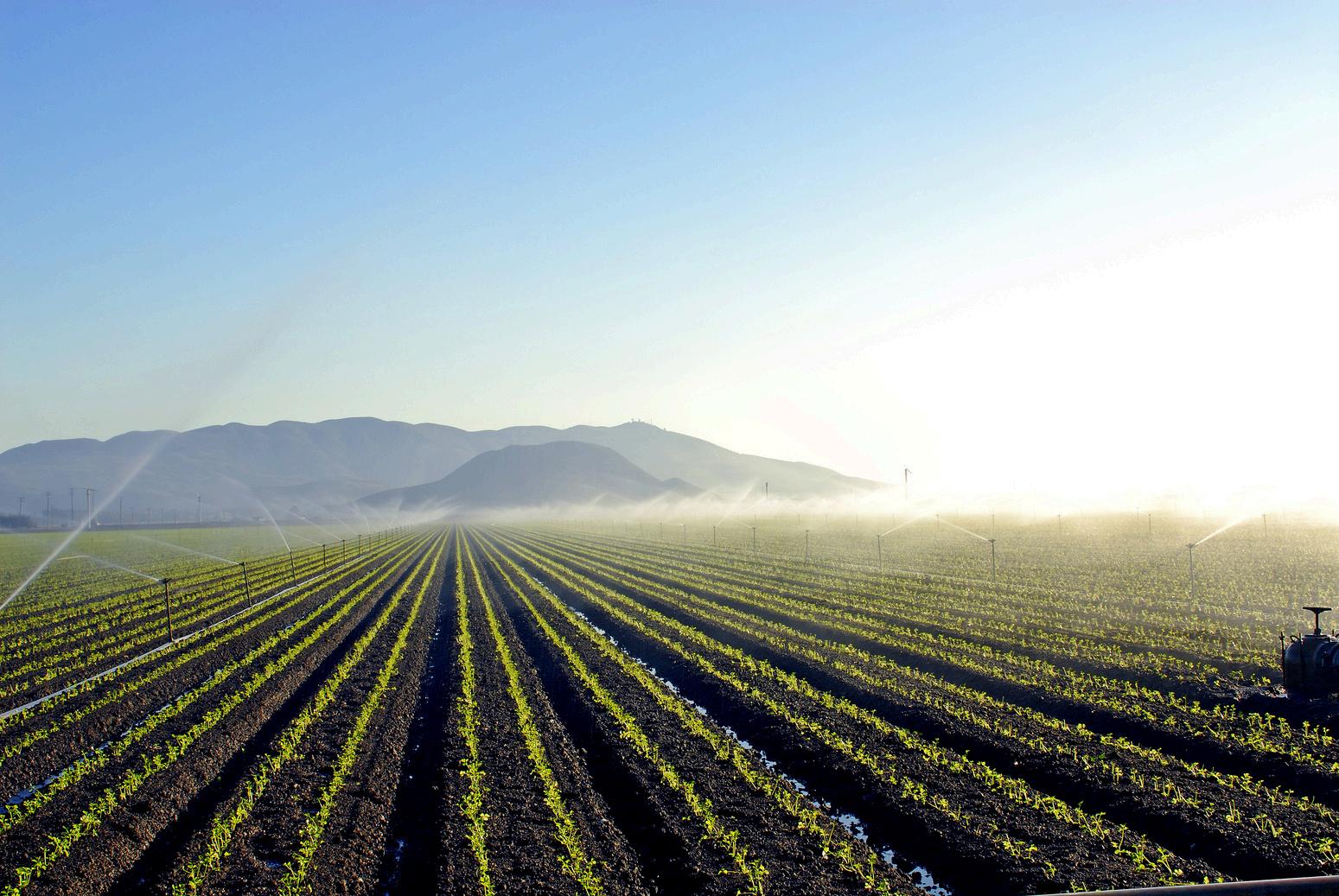
Whether you’re a recent graduate eager to embark on a fulfilling career path, a seasoned expert seeking new challenges and growth opportunities, or someone transitioning into the field, the irrigation industry offers many exciting and dynamic options If you're interested in advancing technology, sustainability, urban green spaces or agriculture, this field has something for you Below are just a few examples of where a career in irrigation can take you!








The recent Irrigation Australia board elections have brought a fresh perspective to the association with the appointment of new director Lucy Wilson. While five directors stood for re-election at the Annual General Meeting (AGM), Lucy is the sole newcomer.
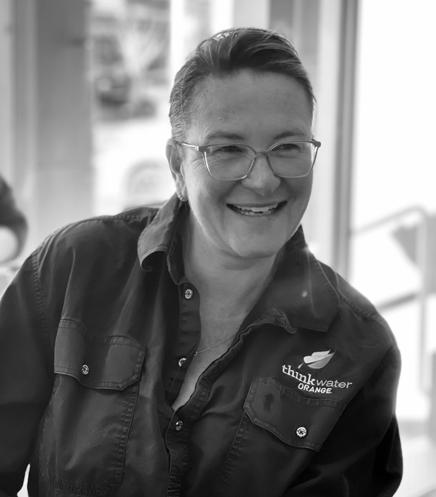
Lucy Wilson brings a wealth of experience from both her previous career in emergency nursing and her decade-long journey in the water industry. As the director of Think Water Orange and TWS Evolution, she has developed integrated HSEQ (Health, Safety, Security, Environmental and Quality) management systems and overseen water infrastructure projects, giving her a unique perspective on the practical challenges faced by regional irrigation businesses.
“I’m passionate about creating meaningful relationships with suppliers and increasing regional members’ opportunities to benefit from their Irrigation Australia memberships,” Lucy said. “Female representation is another area I’m keen to champion, both in the industry and on the board.”
Lucy is also looking forward to being involved with Irrigation Australia’s Regional NSW Committee.
Challenges and opportunities ahead
Lucy identifies innovation and new technologies as both a critical opportunity and a challenge for the irrigation industry. “Data-driven solutions are essential for optimising water use and improving agricultural productivity, but smaller farms face financial and logistical barriers to adopting these technologies. We need to focus on practical tools that turn data into actionable insights without overwhelming users with complexity or cost.”
In addition, she is looking forward to contributing fresh ideas to the planning of the next national Irrigation Australia event, with an emphasis on supplier involvement and new initiatives to benefit the industry.
Learning and leading
As a first-time board member, Lucy is keen to learn from her experienced colleagues while contributing her regional perspective and fresh ideas. “I hope to make a meaningful impact and grow my knowledge in this new role,” she said. Outside of work, her life revolves around her four children, aged 10 to 17, with a family passion for music and sports keeping her busy when she’s not focusing on irrigation.
Lucy joins the ranks of re-elected members Valentina Tripp (Deputy Chair), Rob Nadebaum, Matthew Binder, Grieg Graham, and Carl Walters. Board members Simon Treptow (Chair), Peter Brueck, Clinton Hort, and Genarro Vellotti remain on the board, with their current terms expiring at the 2025 AGM. The two-year alternating terms are designed to maintain a balance between continuity and renewal.
Irrigation Australia would like to congratulate all elected board members and extend our thanks to all who nominated for positions.
The most common issue we hear members raise is the industry’s skills crisis – the growing difficulty in attracting and retaining skilled staff and remaining competitive in the employment market. To address this, Irrigation Australia is tackling this issue head-on through the Irrigation Futures –Careers initiative, temporarily pausing several other planned activities for 2025 to ensure resources are directed towards this critical challenge.
• Irrigation industry profile and policy
• Adoption of best practice, including research and development
• Industry skilling, including Irrigation Training Australia (the RTO)
• Industry careers
We’re delighted to see early enthusiasm for the program, but its success depends on securing investment from a range of sources.
We are fortunate to have a fantastic group of supporters. Their investment ensures that students have access to modern training materials, facilities and industry experts. Their contributions also drive initiatives to support industry growth. While we are working to secure government grants, having a small fund set aside is essential to show that the industry is contributing, which is often a requirement for these grants.
A prospectus for the new careers program will be available soon. For now, here’s a rundown of what we plan to do:
• Establish an industry advisory committee to steer investments across sub-programs, improve industry intelligence gathering, work with regional committees to advise on state or region-specific needs, and enhance the new careers website.
• Work with national funders, such as the Australian Government Department of Employment and Workplace Relations, on initiatives and demonstration projects.
• Strengthen state-level support by developing initiatives with water agencies and regulators, and exploring ways to increase funding to support training.
• Build stronger employer connections to ensure training suits workplace needs and connects participants with the latest equipment and practices.
• Promote employers of choice by showcasing supporters as top employers on our website while highlighting their contributions to industry growth and competitiveness. Continuous investment will enhance the website and resources, supported by social media campaigns to amplify job ads and other content.
• Incorporate skills and careers development into events with a focus on attracting young people and their mentors through incentives, hands-on activities, and joint initiatives with exhibitors.
We recognise that not everyone in the industry may be able to provide financial support, but the program will be designed to deliver benefits to all members.
At the time of writing, we have lodged several grant applications, with more planned. These include efforts to secure funding to support training in Qld and NSW (stay tuned for announcements), with applications for other states underway. Among the most exciting ideas proposed so far are:
• Queensland micro-credentials program: A funding application for an eight-hour Irrigation Efficiency and Practical Skills course to be delivered in a facilitated online format. By the end of the course, participants will be able to diagnose and address common system issues, identify opportunities for water and energy efficiency, perform seasonal adjustments and conduct regular maintenance checks.
• Building Women’s Careers program: A major application for the Australian Government’s initiative, which if successful, will establish a mentor network in WA to make the industry more attractive to young women. The program would also deliver 60+ ‘Irrigation Installer’ skill sets to address the region’s growing challenges in attracting and retaining skilled workers.
This careers focus will complement our current training efforts and serve as a platform for our growing advocacy in each region on licensing and other regulations that affect our members. It will link to our regional committees in WA, Vic, SA and Qld, and the re-established committee in NSW. These passionate regional groups have already played a vital role, providing letters of support for funding applications. We are also working on new bi-monthly regional communications to raise the profile of committee members and keep regional members informed about relevant activities, policy, regulation in their states.

For students navigating training with Irrigation Australia, having access to friendly, approachable, and knowledgeable support can make all the difference. Madeleine Farmilo has recently joined the Registered Training Organisation (RTO) team to play an important role in ensuring students feel guided and supported throughout their learning.
“My role with Irrigation Australia is all RTO-related,” Madeleine explains. “I assist students with their courses, making sure they attend training, upload their assessments on time, and get the help they need. Irrigation Australia is committed to providing a positive learning experience, and I’m here to contribute to that.”
As well as providing student support, Madeleine is in the process of overseeing training contracts, learning the intricacies of compliance obligations to ensure the organisation meets its requirements while achieving positive outcomes for students. From creative writing to compliance. Madeleine holds a Bachelor of Creative Industries majoring in Creative and Professional Writing from Queensland University of Technology. Her first job after university was with a company that developed resources for RTOs in the Hair and Beauty sector.
“That role was an excellent introduction to the RTO world,” she says. “I learned so much about quality systems, policies, and procedures, as well as the importance of compliance.”
A fresh perspective on irrigation. Since joining the team, Madeleine has been struck by the complexity of the irrigation industry. “I’m astonished by what students need to know and how intricate it all is,” she says. “There’s so much passion and drive in this industry, and I love seeing that. I’ve only just started learning about it and am excited to discover more.”
“I get pretty hung up on details and don’t mind a chat,” she says with a laugh. “I’m also passionate about education, and it makes me proud to support students who are investing their time and effort into completing their training.”
Welcome, Madeleine!


At Irrigation Australia, we are deeply committed to building a sustainable Australian irrigation industry through applied research, high-quality skills and careers development, and balanced policy advice
We would like to extend our sincere appreciation to the following leading irrigation companies which sponsor our 'Irrigation Futures' initiatives. Their invaluable support, which often includes financial contributions and the provision of modern equipment and facilities for our students, plays a vital role in shaping the future of our industry




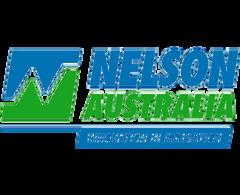













Irrigation Futures provides a model which builds real opportunities for engagement and offers a unique chance to shape a sustainable future for irrigation If you’re interested in supporting our initiative, please reach out for more information.
What’s going on in the regions and with membership by Rebecca New, IAL’s National Membership Manager.

What a year it has been!
From staff changes and office relocations to hosting a successful national conference amidst unpredictable weather, it’s been a whirlwind for the Irrigation Australia team. Through all the challenges and opportunities, our focus has remained on supporting and assisting our valued members. We’ve been hard at work finding new ways to enhance communication and engagement, and as always, we welcome your feedback on how we can better serve you.
A key achievement this year has been the new ‘State of interest’ feature in member profiles. By default, your profile now includes the state associated with your postal address, but you can add other states to stay updated on developments nationwide. Simply log in to your profile via the Irrigation Australia website to make these updates. If you need assistance, our friendly staff are just a phone call away.
This initiative has already seen great success in our pilot program with the Queensland region. We’re now taking the next step by refining our member categories to better segment and tailor communications. This will ensure you receive updates relevant to your sector, including training opportunities, industry news and more.
Victoria Christmas breakfast. The annual Victorian Irrigation Professionals Christmas Breakfast, held on 25 November 2024, was a resounding success. Hosted by Irrigation Australia with the support of our dedicated Victorian Committee, the event brought together industry leaders and professionals for a morning of networking, inspiration and collaboration.

A heartfelt thank you to our incredible sponsors, whose generous support made this event possible. Your contributions help us celebrate and strengthen our vibrant industry.
We were privileged to welcome Kevin Sheedy, legendary former AFL player and coach, as our special guest speaker. Kevin captivated the audience with an inspiring presentation on achieving "best in class" in both sports and business, sharing valuable insights that we can all apply to our professional lives.
To everyone who joined us, thank you for making the event so memorable. Check out some of the photos of the event HERE. We look forward to seeing you at the next one!
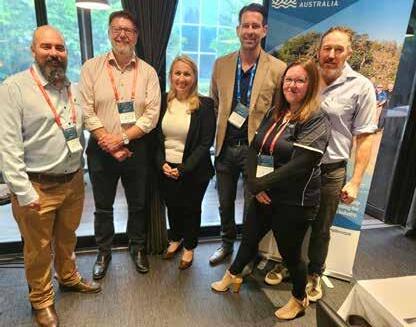

Priorities for 2025. The Victorian Regional Committee has identified two key carry-over actions to tackle this year, reflecting its commitment to addressing industry needs and fostering growth. These actions aim to strengthen the irrigation sector and ensure a sustainable future for the profession:
1. Planning a maintenance day: The committee is organising a maintenance day for industry professionals to build practical skills, share best practices, and explore the latest tools and technologies. We are focussing on selecting accessible locations and scheduling the event at a time that works for most members to ensure strong attendance and meaningful outcomes.
2. Focusing on career pathways: The committee is addressing the challenges of an aging workforce by focusing on ways to build strong career pathways. At the next meeting we will explore strategies to attract, train and retain new talent, including collaboration with educational institutions, creating mentorship opportunities and promoting the irrigation industry as a rewarding career choice.
By tackling these priorities, the Victorian Regional Committee aims to support professional development and address critical workforce challenges in 2025. Further updates and outcomes from these initiatives will be shared with members as plans progress.
New meeting format. Due to low registration numbers, the Annual Regional Meeting was cancelled this year. In response, the committee has proposed shifting away from the traditional meeting format and embracing a more dynamic approach. This new direction will include ideation sessions aimed at driving future improvements, formalising committee and executive roles, and voting on a cohesive regional vision for the upcoming year.
Committee members for 2025. Despite the cancellation, we held a productive meeting where the previous regional committee members officially stood down, and new nominations were presented and confirmed. This marks an exciting step forward for our regional operations, and we are thrilled to announce the committees for Western Australia in 2025.
• Alison Waters, Chair (re-elected)
• Mark Davies, Vice Chair (re-elected)
• Andrew Ogden, Secretary (re-elected)
• Daniel Rose, Treasurer (re-elected)
Waterwise
• Jason Rothery, Chair (re-elected)
• Shane Massara (re-elected)
• Neil Brooks (re-elected)
• Dave Ahlquist (new)
• Mark Davies, Chair (re-elected)
• Rick Charles (new)
• Clive Croxford (new)
• Steve Westover (new)
Training
• Paul Willmott (re-elected)
• Karl Clively (re-elected)
• Clive Croxford (new)
• Dave Ahlquist (new)
Rural
• Clive Croxford (re-elected)
• Karl Clively (re-elected)
Waterwise Irrigation Expo. Planning for Irrigation Australia’s next major event, the 2025 Waterwise Irrigation Expo, to be held on 13 August 2025, is in full swing! Exhibitor booths and sponsorship packages are disappearing fast, so now is the time to secure your spot before it’s too late. We are currently finalising presenters and the program, with delegate ticketing set to launch mid-year. This highly anticipated event offers an unparalleled opportunity to
showcase your business and connect with the industry leaders shaping the future of waterwise solutions.
As the ultimate gathering for Western Australia’s urban landscape and irrigation industry, the Expo promises cuttingedge insights, innovative technologies, and exceptional networking opportunities. Whether you’re looking to increase brand awareness, introduce a new product or service, or expand your professional network, this is the event you can’t afford to miss.
• Download the Exhibitor Prospectus to explore booth inclusions, sizing, and pricing, and see who’s already on board as an exhibitor.
• Download the Sponsorship Prospectus to learn about the exclusive benefits of the remaining sponsorship packages and secure your place as a key supporter of the Expo. Don’t let this opportunity pass you by! For more information or to discuss your options, contact Rebecca New at rebecca. new@irrigation.org.au. We look forward to seeing you at the Waterwise Irrigation Expo!
Great turnout for end-of-year social event. The Queensland Committee organised a well-attended endof-year event at BrewDog in Murarrie on 6 December. Despite the heat, the event was a great success, offering attendees the chance to network with committee members and Irrigation Australia staff, foster new relationships and strengthen ties within the industry. It was a wonderful way to wrap up the year, celebrate achievements, and build momentum for the exciting opportunities ahead.
Thank you to everyone who helped make this event so memorable. Check out some of the photos from the event HERE!
We are excited about offering more opportunities for members to connect and collaborate this year. Stay tuned!

Successful member event. The first member event for South Australian members was a great success! Nearly 50 members gathered for a breakfast event at Greenfields Wetlands in Adelaide, eager to network and learn about the City of Salisbury’s innovative approach to urban stormwater management.
After enjoying a delicious breakfast and coffee, attendees had the opportunity to take part in a guided tour of the wetlands, which highlighted the City’s remarkable efforts in managing urban water. A huge thank you goes out to everyone who contributed to the success of the event, especially Robert Owen and Bruce Naumann from the City of Salisbury, whose insightful presentations truly captivated the audience.
Originally established as a flood mitigation system for surrounding developments, the City of Salisbury now employs cutting-edge technology for aquifer recharge, water storage, and basic treatment, serving thousands of customers with reclaimed water.


A special shout-out was also given to Alan Michelsen, the recent recipient of the Irrigation Australia Distinguished Service Award, nominated by his colleagues in the region. It was inspiring to witness the energy and enthusiasm from the revitalised regional committee – an exciting time to get involved and contribute to the future of irrigation in South Australia! To check out some photos from the event, click HERE.
Priorities for 2025. The committee has identified several priority areas:
• Attracting talent to the irrigation industry and ensuring training programs in South Australia remain relevant and well supported.
• Increasing enrolments in training programs, with extra effort to promote courses and align them with industry needs, addressing low participation rates such as in the recent Certificate III in Irrigation Technology course in Adelaide.
• Expanding training opportunities by:
– collaborating with state training authorities
– securing funding to reduce costs and enhance course offerings – exploring potential grants for course development, training materials, and specialised short courses.
• Advancing career development initiatives through member feedback on proposals aimed at addressing workforce needs.
Invitation to NSW members. The irrigation industry in NSW has lacked a clear direction at both the local and state levels, with limited feedback reaching the organisation. To address this, a passionate group of individuals has taken the first step toward change, and we’re reaching out to members in the region for support.
Key focus areas for the committee include:
• fostering industry networking through events and webinars
• forming an active and engaged committee
• addressing career promotion, skills development, and training needs
• advocating for policies that support the industry.
The committee will also prioritise initiatives like attracting young talent, advocating against regulatory changes, elevating the recognition of industry professionals, and promoting the vital role our industry plays in managing Australia’s water resources sustainably.
We invite you to join this exciting revitalisation of the NSW irrigation industry and contribute to shaping its future. The first committee meeting is scheduled for late February 2025.
For more information, contact Rebecca New, Membership Manager, at rebecca.new@irrigation.org.au


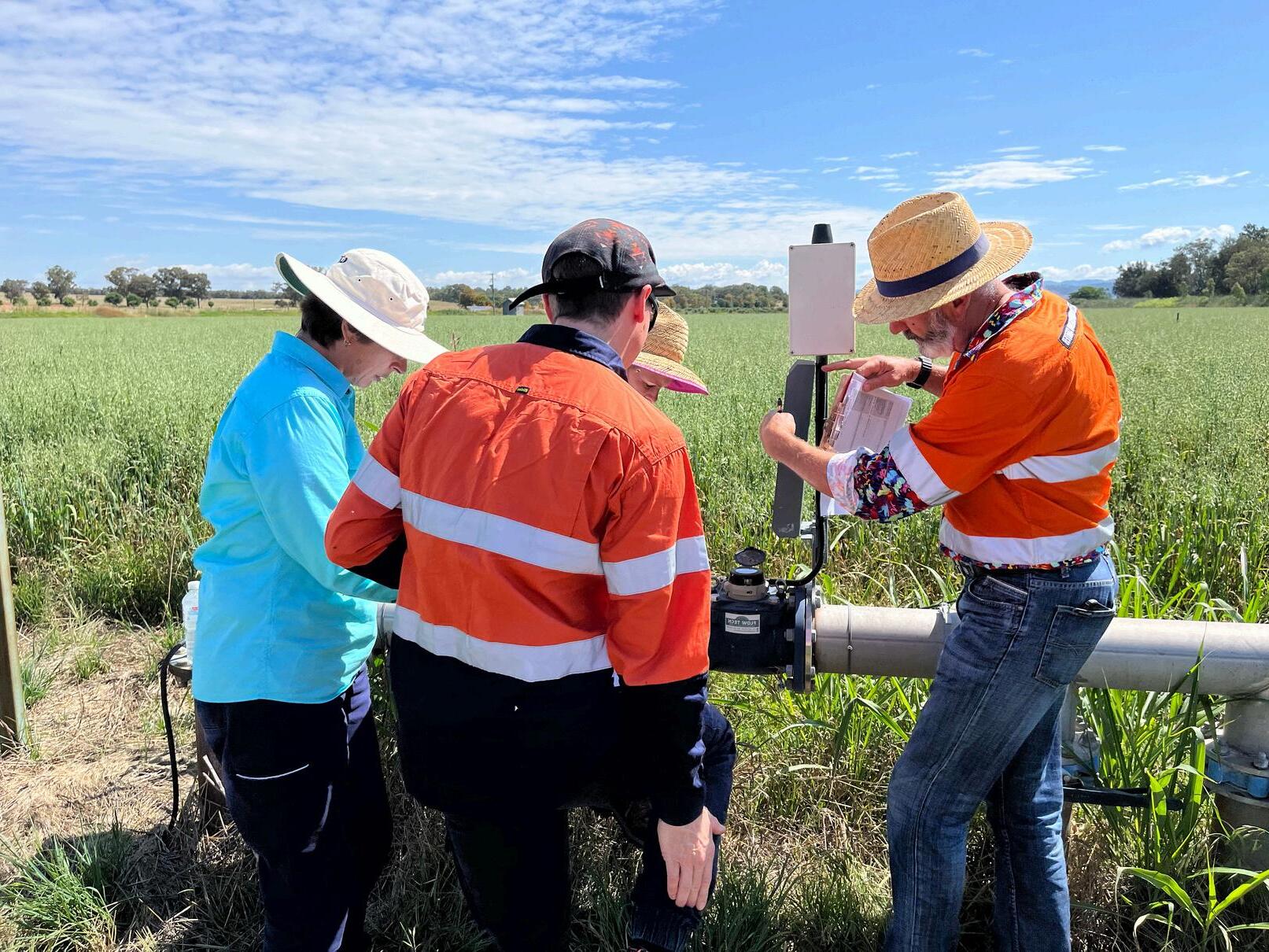
Expand your opportunities in an industry full of growth!
Irrigation Australia provides a wide range of high-quality training programs, delivered by industry experts who are passionate about the training that they are delivering
We provide a unique blended learning experience, focusing on a practical approach, which allows our students to learn by doing!
PRACTICAL FOCUS
BLENDED LEARNING
COURSE VARIETY
REGISTER YOUR STAFF FOR A PRIVATE IRRIGATION TRAINING COURSE!
Irrigation Australia is proud to offer tailored training solutions for private groups across the country. Whether you’re part of a company, community group, or organisation, our industry-recognised training programs are designed to meet your unique needs
With a minimum group size of 8-10 participants, we provide flexibility in course content, resources, equipment, and trainer selection, ensuring the training aligns perfectly with your goals.
Get in touch today to discuss how we can bring customised, high-quality irrigation training directly to you! Email Sam.OBrien@irrigation.org.au for more information
15
Knowledge pathways to discover!
PROFESSIONAL DEVELOPMENT
Are you interested in training but can’t find the right program, location, or dates that suit you?
Click here to complete our easy Expressions of Interest form and our team will be in touch soon!

A training update by Sam O’Brien,
Training and Compliance Manager
Reflecting on a successful year and exciting plans ahead
As we step into 2025, it’s a perfect moment to reflect on a busy and successful year of training delivery here at Irrigation Australia. In 2024, we were proud to connect with over 400 students, offering a range of opportunities to enhance their skills and knowledge. Alongside delivering our flagship Certificate III and Certificate IV qualifications, we also facilitated eight diverse short courses, broadening the scope of our training and expanding our reach across the irrigation community.

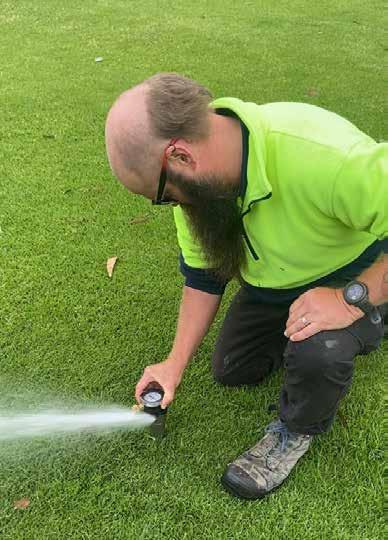

We’ve also made significant progress in addressing a backlog of marking and assessments for students who had been left behind in previous years. While there’s still a little work to do, we’re committed to ensuring every student receives the support they need. If you believe you have outstanding workbooks that require attention, please don’t hesitate to contact us – we’re here to help!
One of the most exciting developments last year was the launch of our new software platform, Ammonite. This much-anticipated upgrade represents a major step forward for Irrigation Australia’s training delivery. To get a firsthand look, we invite you to explore our free Introduction to Irrigation online course now available on the platform. Reach out to our team for instructions on accessing this fantastic resource.
This year we will focus on fully transitioning to Ammonite, updating and modernising all accredited units and course content. This transformation will enhance the student experience by streamlining access to materials, delivering high-quality content, and reducing time spent in the classroom. With more opportunities to learn in the field through practical, hands-on training, we aim to provide an even more engaging and effective learning journey.
We’d like to extend our gratitude to all the students, trainers, and industry partners who made 2024 a success. Together, let’s continue to shape the future of irrigation training and practice. Here’s to a bright and rewarding 2025!
Check out Irrigation Australia’s training course booklet. This comprehensive publication provides essential details on training courses offered by Irrigation Australia.
• Certificate III in Irrigation Technology
• Certificate IV in Irrigation Management
• Centre Pivot and Lateral Move
• Meter Installation and Validation
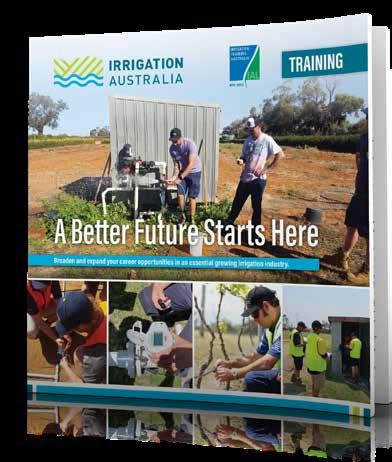
• Introduction to Irrigation | Urban
• Irrigation Pumps and Systems
• Irrigation Efficiency
• Urban Irrigation Design
• Commercial Irrigation Design
• Irrigation Installer
• Storage Meter Installation and Validation


Like many irrigation professionals, Brooke Shepherd entered the industry from a different background.
After finishing school, she worked in hospitality until she grew weary of the weekend hours.
In 2022, her father and uncle – directors of Aqua Techniques in Meadows, South Australia – offered her a role as accounts manager and administrator. Over the past two years, Brooke’s skills have steadily grown, culminating most recently in her completion of a Certified Meter and Validator course. We spoke with Brooke to learn more about her evolving role, her experience with the course, and her advice for fellow students.
IA. Can you tell us a bit about your role?
Brooke. It is constantly evolving! Mostly I do administration and accounting. Some days I get sent out to collect or drop off materials, otherwise I’m organising, ordering and selling parts in our workshop and store. Recently I have also been designing, quoting and supplying materials for vineyard irrigation systems.
IA. What motivated you to complete the Certified Meter Installer and Validator course?
Brooke. I work in admin for my dad and uncle who are constantly flat out, so I wanted to ease the workload. I completed the Meter Installation and Validation course so that I could conduct the meter validations, allowing them to focus on other jobs.
IA. Had you done prior training in irrigation?
Brooke. Everything I know has been learnt on the job – Dad believes the best way to learn is to be thrown in the deep end! Over the past two years I have gained an understanding of pumps, filters and irrigation systems. I’ve learnt this by helping with the quotations, as well as ordering, procuring and delivering materials. When invoicing the completed jobs, I inspect the pictures provided by our onsite workers, which has also helped me learn a lot.
IA. What were the most useful parts of the course?
Brooke. Being able to discuss the topics as a group. Hearing others ask questions or explain their answers gives a different perspective, which gives me a deeper understanding of the subjects. The course was well presented by Paul Willmott, who ensured every student understood the information before moving onto the next topic. As it was a small group of three students, we helped each other if we got stuck.
One of the best aspects of the course was being able to discuss the topics as a group. Hearing others ask questions or explain their answers gives a different perspective, which gives me a deeper understanding of the subjects.”
IA. Is there anything you would change about the course?
Brooke. The only change I would make is to conduct an actual meter validation on site rather than in a mock-up situation.
IA. How will this training help you in your career?
Brooke. I hope it will help me to ease the workload within the business, and possibly allow me to travel rurally for work. I’d love to do a working holiday, assisting farmers with meter installations and validations.
IA. What advice would you give someone considering training with Irrigation Australia?
Brooke. The classes can be fast paced, so if you are new to the topic, I’d suggest reading the provided information before attending. This will ensure you have a full understanding of all the material upon completion.
Find out more about Irrigation Australia’s Meter Installation and Validation course here.
The Department of Employment and Workplace Relations has helped Irrigation Australia identify new ways to promote career opportunities in the industry. One key resource is myfuture.edu au, Australia’s National Career Information Service, which offers unbiased career advice for students, parents, and educators. Exciting updates are on the way! The site will soon link to irrigationcareers.org.au, featuring testimonials, case studies, and resources tailored to inspire young talent. We’re also enhancing our own career tools and social media presence to keep building awareness of industry opportunities.
CERTIFICATE III IN IRRIGATION TECHNOLOGY
Paterson, NSW Commences 2 June
CERTIFICATE IV IN IRRIGATION MANAGEMENT
Paterson, NSW Commences 24 June
METER INSTALLATION & VALIDATION
4 - 6 February
11 - 13 March
15 - 17 April
29 April - 1 May
Griffith, NSW
Paterson, NSW
Paterson, NSW
Dubbo, NSW
UPCOMING TRAINING PROGRAMS IN
CERTIFICATE III IN IRRIGATION TECHNOLOGY
Brisbane, QLD Commences 31 March
METER INSTALLATION & VALIDATION
25 - 27 March
Brisbane, QLD
CERTIFIED IRRIGATION INSTALLER
27 - 29 May
Brisbane, QLD
CERTIFICATE III IN IRRIGATION TECHNOLOGY
Keysborough, VIC Commences 12 May
CERTIFIED IRRIGATION INSTALLER
18 - 20 March

UPCOMING TRAINING PROGRAMS IN
IRRIGATION PUMPS & SYSTEMS
18 - 19 February
Paterson, NSW
CERTIFIED IRRIGATION INSTALLER
Paterson, NSW 10 - 12 June
ELECTROFUSION & BUTT WELDING
Paterson, NSW 26 - 27 June
Keysborough/Forest Hill, VIC
IRRIGATION PUMPS & SYSTEMS
28 - 29 January
Brisbane, QLD
Brisbane, QLD 15 - 16 April
10 - 11 June
Brisbane, QLD
ELECTROFUSION & BUTT WELDING
Townsville, QLD 13 - 14 February
29 - 30 May
Brisbane, QLD
UPCOMING TRAINING PROGRAMS IN
IRRIGATION PUMPS & SYSTEMS
Keysborough, VIC 11 - 12 March
ELECTROFUSION & BUTT WELDING
Keysborough, VIC 1 - 2 May
CERTIFICATE III IN IRRIGATION TECHNOLOGY
Commences 28 April
Commences 16 June
Adelaide, SA
Adelaide, SA
CERTIFIED IRRIGATION INSTALLER
6 - 8 May
Adelaide, SA
UPCOMING TRAINING PROGRAMS IN WESTERN
CERTIFICATE III IN IRRIGATION TECHNOLOGY
Perth, WA Commences 17 March
Perth, WA Commences 9 June
CERTIFIED IRRIGATION INSTALLER
11 - 13 March
8 - 10 April
Perth, WA
Perth, WA
ELECTROFUSION & BUTT WELDING
20 - 21 February
UPCOMING
Perth, WA
METER INSTALLATION & VALIDATION
21 - 24 January
25 - 28 February
13 - 16 May
3 - 6 June

UPCOMING TRAINING PROGRAMS IN
IRRIGATION PUMPS & SYSTEMS
20 - 21 May
Adelaide, SA
ELECTROFUSION & BUTT WELDING
1 - 2 May
Virtual Delivery
Virtual Delivery
Virtual Delivery
Virtual Delivery
Adelaide, SA
IRRIGATION SYSTEMS EFFICIENCY
4 - 6 February
11 - 13 March
29 April - 1 May
Perth, WA
Perth, WA
Perth, WA
IRRIGATION PUMPS & SYSTEMS
20 - 21 January
14 - 15 April
Perth, WA
Perth, WA
UPCOMING TRAINING PROGRAMS IN
METER INSTALLATION & VALIDATION
17 - 19 June
TBC, Tasmania
CENTRE PIVOT IRRIGATION
26 - 30 May
TBC, Tasmania

As Southeast Queensland gears up for the Brisbane 2032 Olympics, local businesses like Waterworx Australia are seizing the opportunity to play a role in the region’s transformation.
Based on the Sunshine Coast, Waterworx Australia specialises in the design and construction of commercial irrigation projects, with a focus on quality and longevity.Owner and director Justin Wallace spoke to Irrigation Australia Journal about the keys to business success, the challenges of running an irrigation business, and his strategic vision for the future.
Initially established around 2010 as a rainwater tank business, Waterworx soon evolved to include irrigation. Today, it is a fully-fledged irrigation company that serves commercial clients across Southeast Queensland.
Justin came to the business in 2022 from a professional background in industrial chemical sales. In addition to Waterworx, Justin operates a Think Water irrigation shop just south of Brisbane.
Waterworx’s projects vary in scale, ranging from small $2,000 jobs to substantial $900,000 undertakings. On average, most projects fall within the $30,000 to $50,000 range. While new designs and installations form the backbone of the business, Waterworx also provides maintenance services – a sector they are keen to expand.

Waterworx employs a skilled and experienced team, ensuring smooth operations and delivery. The staff include a general manager, senior estimator and scheduler, estimator, project coordinator, installation supervisor, six installers (four based on the Sunshine Coast, two in Brisbane) and four labourers.
Waterworx’s success are attributed to four main factors:
1. Experience: Employing staff with years of industry knowledge has been critical.
2. Relationships: Building and maintaining long-term working relationships with customers, predominantly landscapers, has created trust and reliability.
3. Quality: A focus on high-quality installations that offer value for money and stand the test of time.
4. Planning: Strategic business planning has positioned the company for growth, including gearing up for an expected surge in sportsfield work ahead of the Brisbane 2032 Olympics.
Like all irrigation businesses, for Waterworx, weather is a double-edged sword. Persistent rain can slow down work, causing significant delays and impacting revenue. “We manage some flexibility with our labour team, but we often just have to roll with it,” Justin explains.
On the retail side, Think Water The Irrigation shop also faces challenges during extended rainy periods, though pump sales help offset losses.
Despite the challenges, Justin is optimistic about the future. “Southeast Queensland is poised for growth compared to much of the east coast. With many sportsfields slated for upgrades in the lead-up to the Olympics, we’re preparing to capitalise on these opportunities,” says Justin. Both Waterworx and the Think Water business are implementing strategies to seize these opportunities and cement their position as industry leaders in the region.
Information. Email: admin@waterworx.net.au, Phone: (07) 5476 8548.

The Pump House, a well-established pumping and irrigation business in Southeast Queensland, has entered a new phase. As of 1 November 2024, brothers Ben and Jock Lee have taken ownership, signalling a fresh start while honouring the company’s 38-year legacy.

Founded in 1986, The Pump House has grown under the leadership of Managing Director Peter Chadband, expanding from a single location to four branches across Nambour, Gympie, Beerwah, and Chinchilla. The business has earned a reputation for delivering reliable water management systems and for its community-first approach. Over the decades, it has become a trusted name for farmers, rural properties, urban residents, and businesses across the region.
With Ben and Jock now leading the business, they aim to balance continuity with innovation. Recognising the growing demand for sustainable water solutions, they plan to uphold The Pump House’s reputation for quality and reliability while embracing the challenges of the future.
Speaking to the Irrigation Australia Journal, Ben emphasised that while the leadership has changed, The Pump House remains committed to supporting Southeast Queensland’s water needs. The brothers are focused on ensuring the business continues to serve the community and evolve with future demands.
Brisbane-based electronics company IntelliDesign has announced the asset acquisition of SigSense, incorporating its expertise in telemetry solutions into IntelliDesign’s operations. This move expands IntelliDesign’s capabilities in Non-Urban Metering (NUM) and the NSW Framework for PatternApproved Water Meters (FPH) through its Ninox brand.
IntelliDesign has been designing and manufacturing electronics for harsh environments for more than 30 years. The family-owned Brisbane company produces more than 50,000 products annually and operates under a certified aerospace quality management system.
The Ninox brand, created by IntelliDesign, focuses on outdoor monitoring solutions. Its LIDScout telemetry device is certified for use in NSW NUM applications, is listed on the DQP Portal, and is being deployed across New South Wales.
Through its Ninox brand, IntelliDesign has developed the LIDScout telemetry product, certified for use in NSW NUM applications. The LIDScout units are now listed on the DQP Portal and are being deployed across New South Wales to support water metering and monitoring needs.
SigSense customers can expect ongoing support as usual, with all SigSense staff now part of IntelliDesign’s team. Customers can continue to use the same contact details or visit the Ninox website at www.ninox.global

Transform gardens with easy-to-install landscape solutions, offering efficient watering options for both small and large gardens.






• Emerging technologies like sap flow sensors are enabling precise irrigation management by focusing on the plant's water needs rather than soil moisture.
• Macadamias face irrigation challenges, including over-irrigation causing diseases and under-irrigation reducing yields.
• Inform Ag and Rural Funds Management have developed a system combining plant-based sensors, automation, and connectivity to address these issues.
• The approach has reduced water use by 20–25 per cent, improved yields, and cut labour needs, demonstrating scalability for large-scale farming.
Emerging technologies are enabling the use of plant-based sensors to directly monitor internal plant parameters, offering a shift away from traditional soil moisture assessments for irrigation management. Innovations such as sap flow sensors, dendrometers to track trunk diameter changes, and canopy temperature sensors provide real-time insights into the water status of trees. These methods offer advantages, including a more precise understanding of the plant's immediate water requirements and the ability to respond dynamically to stress signals.
This article focuses on a collaboration between Inform Ag and Dr Dan Manson, an agronomist and researcher at Rural Funds Management, to develop an advanced irrigation system that integrates plant-based sensors, automation, and connectivity.
Macadamias are particularly vulnerable to challenges related to irrigation. Over-irrigation can lead to diseases such as Phytophthora, while drought stress caused by under-irrigation can significantly reduce yield. Traditional soil moisture probes, while widely used, provide limited insight into the actual water needs of the crop, often leading to inefficiencies in irrigation practices.
Additionally, the lack of connectivity on farms presents a significant barrier to modernising irrigation systems. Remote locations with patchy or non-existent signals make it difficult for growers to monitor and manage systems effectively.
To overcome these barriers, Inform Ag and Dr Dan Manson partnered to develop a solution that combines cuttingedge technology with practical agricultural expertise. Their approach focuses on three key innovations:
Advanced plant-based sensors. Sap flow sensors, which monitor water movement within the plant, were deployed across macadamia orchards to provide real-time data on drought stress and water requirements. Unlike soil probes that measure moisture levels in the ground, these sensors focus on the crop itself, enabling more precise irrigation.
“We’re not growing soil; we’re growing trees,” Dr Manson said. “Monitoring the crop directly gives us deeper insights into drought stress and helps us apply water exactly when it’s needed. The plants tell us what they require, and we respond accordingly.”

Traditional irrigation management has long relied on tools like soil moisture probes and weather-based models, but plant-based monitoring techniques are revolutionising the way growers approach water management. These technologies measure key physiological parameters directly within the plant, offering unparalleled insights into the crop’s water status.
• Sap flow sensors track the movement of water through the plant, revealing real-time water use and stress levels.
• Dendrometers monitor subtle changes in trunk diameter, which can indicate water stress or growth patterns.
• Stem psychrometers measure water potential within the plant, helping growers and how to prevent it.
By listening to the plant itself, these techniques empower growers to make precise, science-based irrigation decisions, reducing water waste, preventing over-irrigation, and boosting crop health. For macadamias, which are particularly sensitive to water mismanagement, these tools represent a game-changer in achieving optimal yields and sustainability.
Irrigation automation and integration. While sap flow monitoring remains an emerging technology in agricultural irrigation, the real breakthrough lies in how this system integrates and processes information. At its core, the system integrates sap flow, vapour pressure deficit and weather analysis. Leveraging modern sensors, data, and AI models enables a true revolution in orchard irrigation – from protecting orchards from drought stress and limiting overirrigation to optimising water and fertiliser.
The data generated by the sap flow sensors feeds directly into the automation system, which includes 765 valve sites that control pumps, filters, and sensors. This automation system significantly reduces manual irrigation tasks, integrates seamlessly with existing farm infrastructure, and provides growers with a unified platform for managing resources.
Farm-wide connectivity. To support the real-time operation of sensors and automated equipment, Inform Ag established a Wi-Fi mesh network using valve sites as access points. This infrastructure ensures reliable data transmission and extends connectivity to remote areas of the farm, enabling real-time monitoring and control of irrigation systems while providing internet access for workers and contractors.
Outcomes and benefits
This approach focuses on meeting the crop’s needs while avoiding over-irrigation. It has three key benefits:
Water efficiency and conservation. The integration of plant-based sensors and real-time data analysis has resulted in a 20 to 25 per cent reduction in water use compared with traditional methods, enabling growers to conserve resources without compromising yield.
Improved yield and reduced stress. By providing timely insights into drought stress, the system allows growers to apply water precisely when and where it’s needed. This prevents unnecessary stress on crops and promotes healthier growth. The result is consistent yields and improved crop quality.
Labour savings. The automation system significantly reduces manual labour. Growers no longer spend hours monitoring or adjusting irrigation manually; instead, they can manage the system remotely via dashboards and alerts. This frees up time for other critical farm tasks.
The technology has been successfully implemented across many hundreds of hectares of macadamia orchards, demonstrating its scalability for large operations. The system’s robust design ensures reliability even in remote and challenging environments, providing consistent results for growers. Inform Ag is continuing to develop and expand this technology for broader agricultural applications.

A new case study has highlighted how climate change might impact irrigation demand in vineyards in South Australia’s Riverland region.
Researchers from the South Australian Research and Development Institute (SARDI) used climate, soil, and crop data to predict changes in rainfall, temperature, and evapotranspiration – key factors affecting growers’ water needs.
The study trialled a model on a Riverland vineyard to forecast future irrigation needs. It found that by the end of the century, vineyard irrigation needs in the Loxton area could rise by up to 17 per cent. This increase is mainly driven by reduced rainfall, which is projected to drop by 27 per cent, while evapotranspiration could increase by 8.2 per cent.
This research supports a broader project, backed by the One Basin CRC, to model how climate change will affect irrigation demand across the Murray–Darling Basin. The project will focus on almonds, wine grapes, cotton, and rice, creating maps to help growers plan for future water needs. Researchers aim to provide accurate irrigation demand forecasts to assist growers in making informed decisions about long-term investments, ensuring the sustainability of irrigated agriculture.
Learn more about this research and the project at www.onebasin.au
The irrigation industry, like many others in Australia, is struggling to find enough skilled workers. With a national unemployment rate of just 4.1 per cent and over half of employers reporting difficulties in recruitment, it’s clear that the current workforce challenges are not going away anytime soon. Irrigation technicians and designers are currently on the Occupation Shortage List and the Australian Apprenticeships Priority List
This article explores how businesses can tackle these challenges by:
• thinking differently about recruitment – hiring from underrepresented groups
• making the most of traineeships and apprenticeships to build a skilled workforce
• accessing government resources and programs to make hiring easier.













Recruiting from underrepresented groups can expand the candidate pool. For example, workplaces dominated by one gender – where at least 80 per cent of the workforce is male or female – are more likely to experience shortages. By striving for balanced gender representation, businesses can reduce these challenges and foster a more innovative environment.
It’s not just about gender. Inclusive recruitment also involves considering age and cultural diversity. Groups such as mature-age recruits (50+), people with a migrant or refugee background, youth under 25, and parents or carers returning to work (who may need flexible hours) are often underutilised in the workforce. These groups bring unique skills, perspectives, and opportunities for innovation.
Inclusive hiring doesn’t only address shortages; it also enhances business outcomes. Businesses with diverse teams see better performance, improved employee wellbeing, and even increased market share.
Employers can learn practical strategies through the Department of Employment and Workplace Relations’ Hiring Outside the Box webinars. These free, short sessions cover topics such as hiring neurodivergent talent, crafting effective job advertisements, and building culturally diverse and gender-balanced teams.
Traineeships provide a sustainable way to build a skilled workforce by combining on-the-job training with formal study. These programs equip employees with tailored skills while giving businesses access to financial incentives.
Irrigation technicians and designers are listed on the Australian Apprenticeships Priority List (which includes traineeships), and businesses hiring for these roles are eligible for extra support. For example, the Priority Hiring Incentive Payment offers up to $5000 over one year. Employers can also benefit from wage subsidies and other government support.
Apprentice Connect Australia Providers. To hire an apprentice or trainee, businesses can access free services through an Apprentice Connect Australia Provider. These providers simplify the recruitment process by:
• matching businesses with suitable candidates
• helping with paperwork and sign-ups
• clarifying available incentives and rights
• guiding businesses to the right training and courses
• supporting candidates in recognising prior experience
• offering ongoing mentoring and problem resolution
• assisting with financial incentive claims.
or trainee’s career
The Australian Government offers several free services to support businesses in recruitment and workforce planning.
Workforce Australia allows businesses to:
• advertise job vacancies at no cost
• access tailored recruitment services
• run pre-employment programs
• receive financial incentives of up to $10,000 for hiring and training eligible individuals.
Find the right support to build your workforce:
• Advertise jobs and access recruitment support: Workforce Australia for Business
• Explore apprenticeships and traineeships: Australian Apprenticeships
• Learn more about inclusive hiring practices: Hiring Outside the Box
For businesses facing significant recruitment challenges, the government provides additional programs:
• Launch into Work: Prepares candidates for entry-level roles through tailored training, mentoring, and work experience.
• Local Jobs Program: Operates in 51 regions to accelerate reskilling and address local employment barriers with innovative solutions.
• Employer Liaison Officers: Help businesses connect with government services, design tailored workforce solutions, and link candidates to jobs and training.
Source. This article is based on the recent Fields to Futures
– Growing your workforce webinar held by Irrigation Australia in collaboration with the Australian Department of Employment and Workplace Relations (DEWR). You can access the webinar recording here
Discover Expertise, Quality, and Reliabilty with Brown Brothers Engineers
From small domestic pressure systems to large industrial process pumps, Brown Brothers Engineers provide a full range of pumps and pumping solutions to meet your needs.
• Over 110 years of industry leadership in Australia and New Zealand
• Distributors of top global pump brands like Lowara, Goulds Water Technology, Flygt and Hydrovar
• Specialising in custom-designed pump systems and in-house engineering
• Trusted provider of tailored pumping solutions
• Facilities in Sydney, Melbourne, and Brisbane offering full-service capabilities

Contact us today to discuss your pumping requirements and discover why Brown Brothers Engineers is your trusted choice for delivering pumping solutions.

The annual WatSave Awards celebrate groundbreaking achievements in agricultural water conservation and efficiency, recognising innovations that address pressing challenges in water management. Organised by the International Commission on Irrigation and Drainage (ICID), the awards promote proven practices that demonstrate measurable water savings, aiming to inspire widespread adoption of effective solutions. The 2024 recipients were announced at the Irrigation Australia Conference.
Recipient: Water and Land Management Institute (WALMI), Karnataka, India
Project: Rejuvenation of Participatory Irrigation Management

WALMI's project addresses inefficiencies in Karnataka’s irrigation systems, where water use efficiency in surface flow systems is just 30–35 per cent. Through participatory irrigation management (PIM), WALMI empowers Water User Cooperative Societies (WUCs) to improve water distribution and irrigation management. Comprehensive training programs for farmers and engineers cover water budgeting, crop planning, and maintenance of canal networks, enhancing water use efficiency and agricultural productivity.
Key initiatives include:
1. Training: Farmers are educated about using grants for canal maintenance and encouraged to adopt organic farming, integrated farming systems and water saving techniques.
2. Promotion of PIM: A system of organisations at different levels has been set up to manage irrigation collaboratively. These organisations, including Water User Cooperative Societies (WUCS), are also involved in micro-irrigation projects to enhance water use efficiency.
3. Awareness campaigns: Awareness campaigns educate stakeholders about how to save water.
WALMI's efforts have revived defunct WUCS, improved water fee collection, and increased the irrigated area by 5%. These measures have contributed to estimated water savings of more than two million ML, highlighting the potential of collaborative water management.
Technology Award
Recipient: Prof. Yunkai Li, China
Project: Drip Irrigation Technology for Field Crops

For more than 24 years, Prof. Yunkai Li has worked on advancing drip irrigation technology with a focus on water conservation, improved agricultural productivity, and sustainable resource management. His work spans research, development, and large-scale implementation of innovative irrigation solutions. His key contributions include:
1. Water-saving innovations:
• Developed systems integrating water, fertiliser, and pesticide applications to enhance yields and save up to 61.3 per cent more water than traditional methods.
• Pioneered techniques for using reclaimed, brackish, and saline water, reducing reliance on clean water sources.
2. Improved equipment and technology:
• Invented high-performance anti-clogging emitters and filtration systems for reliable irrigation.
• Introduced smart irrigation platforms using IoT and AI, reducing water and fertiliser use while cutting labour costs.
3. Large-scale impact:
• Implemented drip irrigation over 212,000 ha, saving 330,400 ML of water annually.
• Enabled adoption in challenging regions, saving an additional 190,000 ML annually.
4. Global and regional leadership:
• Advanced sustainable water use aligned with Sustainable Development Goals (SDGs).
• Promoted drip irrigation in China and 17 other countries, driving global adoption.
Young Professional Award
Recipient: Muhammad Haniff Bin Ahmad, Malaysia
Project: Tail Water Recovery System
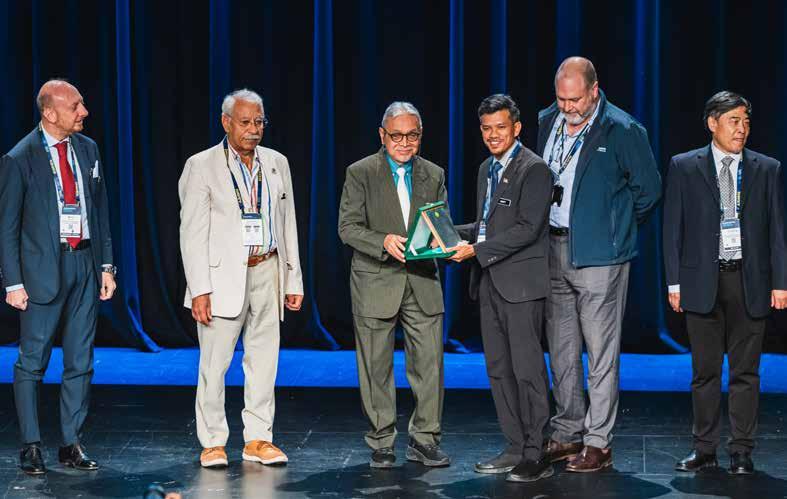
Muhammad Haniff’s project focuses on tail water recovery systems that collect and reuse irrigation and rainfall runoff, reducing water waste and enhancing agricultural sustainability. Implemented at Malaysia’s Rice Centre of Excellence, the system saved 20–32 per cent of water per season over eight years while maintaining high paddy yields.
The success of tail water recovery systems demonstrates their potential to address water scarcity and improve food security. With continued research, education, and community engagement, these systems could drive sustainable water use in agriculture.
Information. You can read more about each of the 2024 winners on the ICID website
Momir Vranes (Chair)
Dave Cameron
P: +61 7 3517 4001, E: dave.cameron@irrigation. org.au
Naomi Carragher
P: +61 7 3517 4002, E: naomi. carragher@irrigation.org.au
Peter Hayes
Eddie Parr
Carl Walters
Richard McLoughlin
Karlene Maywald
Michael Scobie
Claire Miller
Amin Machiani
Andrew Ogden
Zara Lowien
DATE EVENT LOCATION CONTACT/
1 April 2025
14 to 15 April 2025
7 to 13 Sep 2025
7 to 13 Sep 2025
12 to 18 Oct 2026
12 to 18 Oct 2026
11th International Microirrigation Conference
6th African Regional Conference on Irrigation and Drainage
76th International Executive Council Meeting
4th World Irrigation Forum
77th International Executive Council Meeting
26th International Congress on Irrigation and Drainage
Baghdad, Iraq
Abuja, Nigeria
Kuala Lumpur, Malaysia
icid-ciid.org/ event/event_ details/242
icid-ciid.org/ event/event_ details/241
icid-ciid.org/ event/event_ details/199
Kuala Lumpur, Malaysia wif4.org/index. php/en/
Marseille, France icid-ciid.org/ event/event_ details/216
Marseille, France icid-ciid.org/ event/event_ details/217
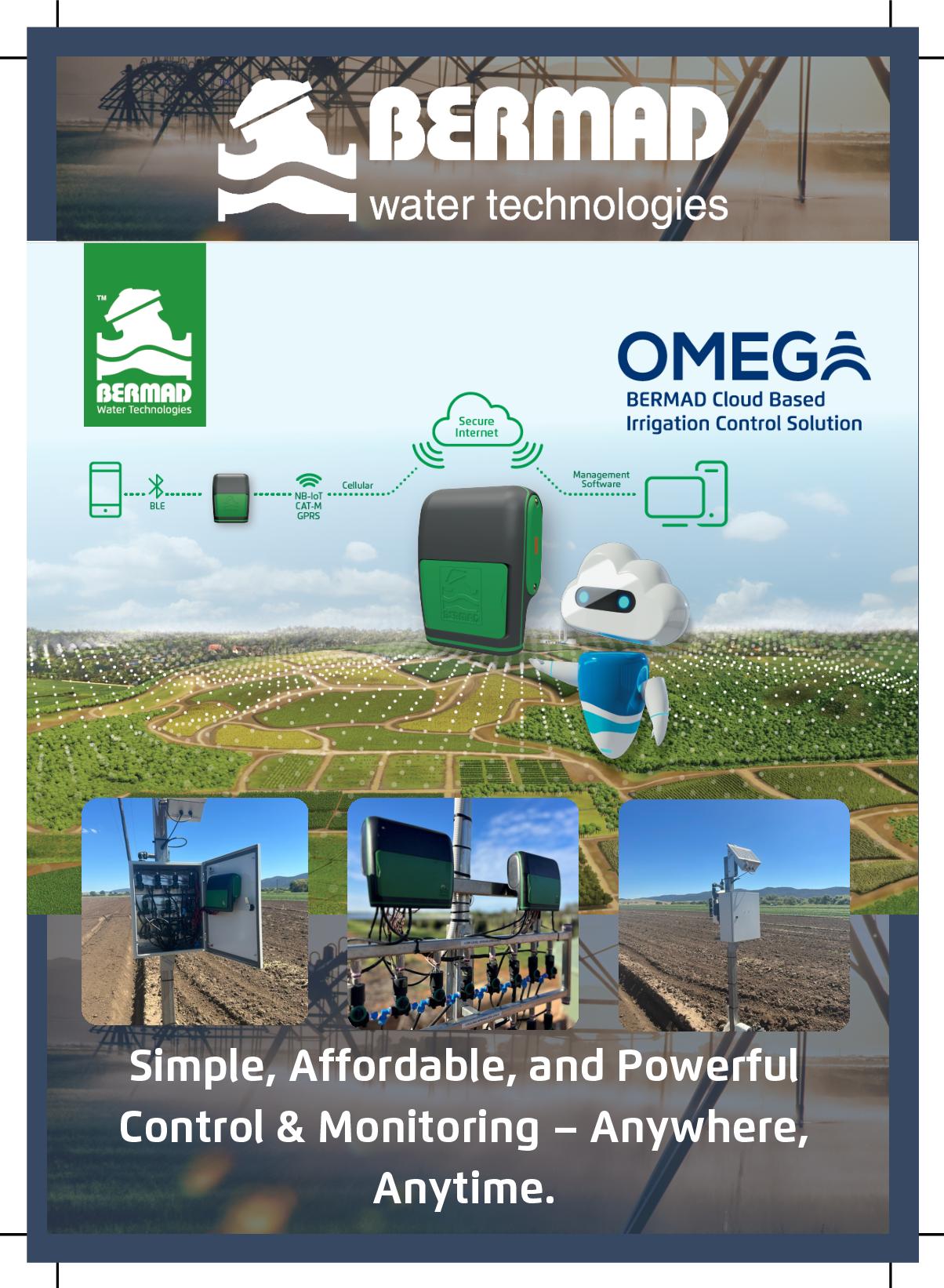
Efficient water management is essential in commercial irrigation, especially as sustainability becomes increasingly important. Davey offers a suite of tools to meet these demands, led by the Monsoon IQ2 control system, complemented by their VM Multistage pumps and ISOspec pump range. Together, these technologies enable precise water control, improve efficiency, and adapt to a variety of irrigation applications.
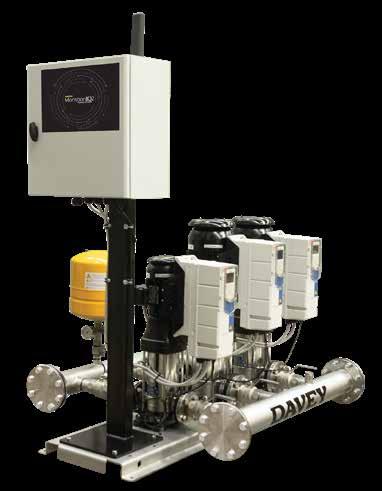
Key features include:
The Monsoon IQ2 is an advanced pump control system designed for flexibility and efficiency. Its modular design allows integration with both modern and legacy pump systems. It uses smart cloud technology and advanced algorithms to provide real-time monitoring and precise control to help users optimise their irrigation systems.
• IoT-enabled monitoring: tracks water levels, pressure, and flow in real time.
• Fault detection: provides alerts for issues such as low flow or high pressure to minimise downtime.
• Remote accessibility: Cloud connectivity allows users to monitor and control their systems from anywhere.
• Universal compatibility: Works seamlessly with Davey and most other pump brands. IQ2 uses predictive analytics to optimise pump management. It offers scalable solutions that improve operational efficiency across various water system applications.
The VM (Vertical Multistage) range is designed for highpressure, high-efficiency applications. Constructed with stainless-steel hydraulic components, these pumps deliver reliable performance while resisting corrosion and abrasion.
Performance highlights:
• High-capacity performance: Flow rates up to 240 m³/h and heads of up to 230 m make these pumps ideal for highpressure applications.
• Efficiency and longevity: Raised bottom bearings, silicon carbide seals, and Teflon neck rings reduced vibration and improve efficiency, extending pump life.
• Easy maintenance: Cartridge-type mechanical seals allow for quick replacements, minimising downtime.
These features make the VM pump range ideal for commercial irrigation, pressure boosting and other demanding applications.
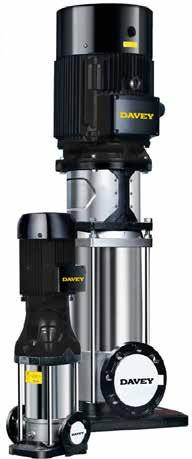
ISOspec pump range: versatile and heavy-duty
Built to ISO 2858 standard, the ISOspec pump range is suited to high-capacity tasks, from municipal water supply to industrial water transfer. The CF (bare shaft) and CM (motor pump) series both move large volumes of water effectively.
Key capabilities:
• Flow and pressure: These pumps have flow rates of up to 900 m³/h and heads of 160 m to handle the most demanding tasks.
• Robust design: dynamically balanced impellers and back pull-out designs mean the pumps are durable and easy to maintain.
• Material versatility: Bronze impellors fitted as standard with stainless steel options available.
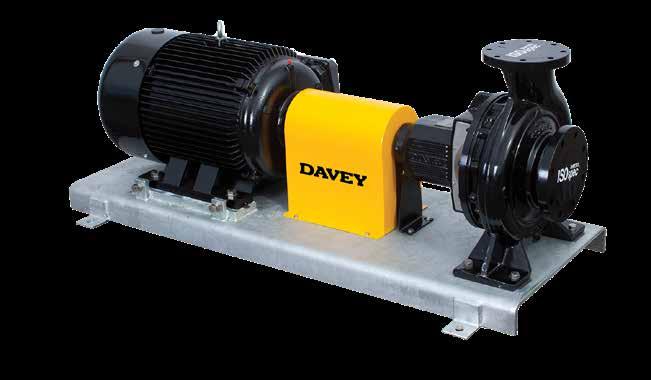

The Monsoon IQ2 can control diverse systems under a single intelligent control platform. By integrating the VM and ISOspec pumps, the IQ2 optimises every aspect of their performance, from pressure and flow management to energy efficiency. By combining these systems, users can seamlessly connect, monitor and control from any location.
Information. To find out more, visit the Davey Water website
Delivering the right amount of water to each plant is essential for effective irrigation, particularly in areas with varying elevation, long lateral runs, or diverse crop needs. Antelco, an Australian-owned and operated micro irrigation manufacturer, has created the SPEC Drip pressure compensating emitter to address these challenges.
SPEC Drip securely connects to 4 mm ID offtake tubing
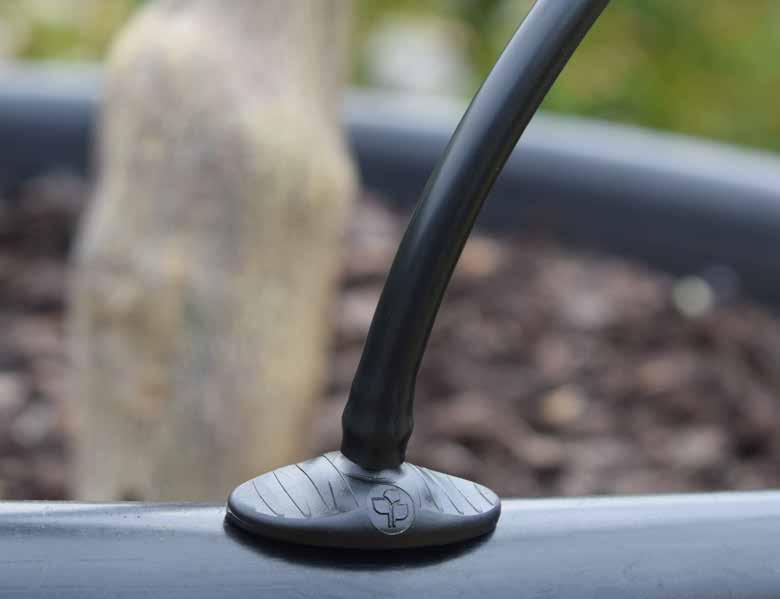
The SPEC Drip, short for Self-Piercing Emitter Compensating, delivers uniform water flow across a range of pressures using a diaphragm and turbulent flow path. It is available in three flow rates: 2, 4, and 8 L/h – suitable for applications such as vineyards, row crops, landscaping and nursery pots.
The emitter’s self-piercing inlet barb allows direct insertion into poly tubing without pre-punched holes, while its barbed outlet connects securely to 4 mm ID offtake tubing, delivering water precisely where it’s needed.
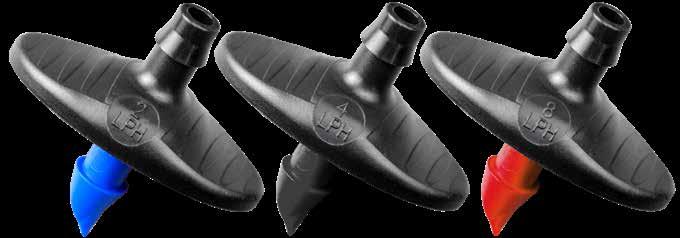
Key features include:
• self-piercing inlet barb with colour-coded bases for easy flow rate identification
• self-flushing action at low pressures
• insect baffle to minimise blockages
• built-in filter within the inlet barb for added protection
• UV-stabilised materials for durability
• resistant to common agricultural chemicals and fertilisers
• low manufacturing variation (Cv) for high performance, meeting ISO 9261 standards.
The SPEC drip tube and drip stake assembly is ideal for landscape and nursery
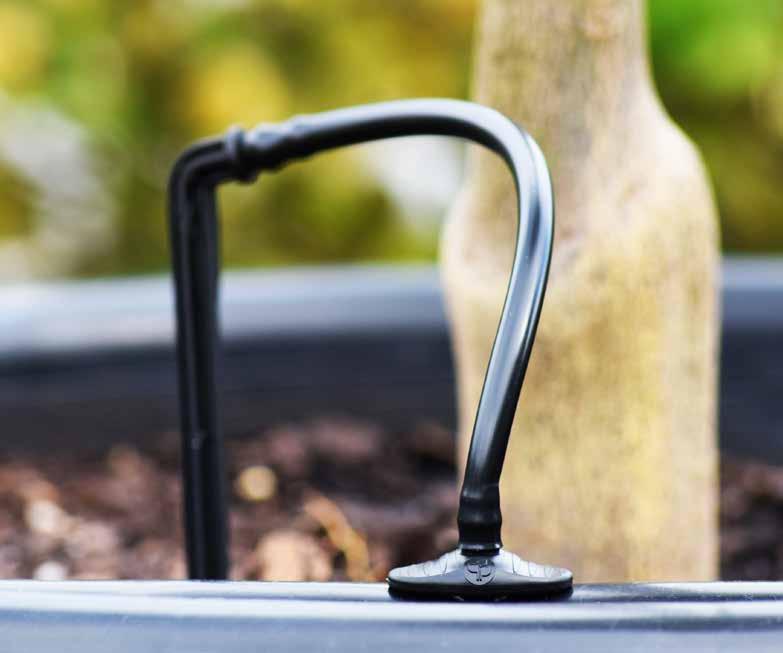
The SPEC Drip is also available pre-assembled with tubing and a drip stake, making it ideal for landscaping and potted plant irrigation. The drip stake delivers precise water directly to the root zone and can be repositioned as needed for optimal placement.
The self-piercing barb simplifies installation, and Antelco’s DripMate tool further simplifies the process with its ability to securely hold the emitter during installation.
The DripMate tool includes a hole punch for lateral tubing and serves as a versatile tool for installing most Antelco drippers, emitters, tubes and adaptors, and stake assemblies. Its leverage claw makes removing barbed products from poly tubing effortless, streamlining both installation and maintenance.
The DripMate tool simplifies the process of installation by securely holding the emitter during installation and punching holes in lateral tubing.

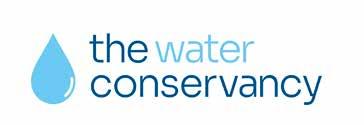

Smart Approved WaterMark, the water efficiency certification program for outdoor products and services, including irrigation, has been rebranded as Smart Drop Certified. Since 2004, the program has reviewed 1000 applications and approved 300 products and services, with 104 currently active licences. Around a third of these are licensed irrigation products.
Smart Drop Certified is managed by The Water Conservancy and certifies water efficient products and services in over a dozen categories including irrigation, garden, soil amendment products, pool and spa, car, plumbing, turf, greywater and rainwater.
Known as Smart Drop to friends, the certification program will continue to operate as Smart Approved WaterMark has done for the last 20 years. The Water Conservancy will recognise both brands until the end of June 2026, allowing licensees plenty of time to update packaging and marketing plans. Updated certificates will be provided upon the next renewal period. All new artwork has been provided, but if you have any questions, contact The Water Conservancy..
The water efficiency certification was set up in 2004 as a directive from the National Water Initiative, specifically designed to recognise water-efficient products that qualify for rebates offered by water utilities and exemptions under drought restrictions. Smart Drop products and services are suitable for inclusion in water business rebate schemes, such as Water Corporation’s Wifi Irrigation Controller rebate program and Sydney Water’s Pool Cover rebate program.
Smart Drop licensees also qualify to participate in the Annual Smart Drop Excellence Awards. Recently Airgarden won the inaugural 2024 Smart Drop Excellent Award. The winner receives a one-year Smart Drop licence for free (valued at $1126), a photo shoot with TWC Ambassador Costa Georgiadis, an Excellence Award trophy and an Excellence Award certificate. Smart Drop Excellence Awards 2025 will open in July.
Smart Drop certification is underpinned by an independent Technical Expert Panel, ensuring credibility and expertise. The independent assessment process guarantees that certified products and services are water-efficient, sustainable and fit for purpose. Four application rounds are held each year with applications being reviewed against four criteria:
Prue Bauer, Founder of Airgarden, with Costa Georgiadis wins the inaugural Smart Drop Excellence Awards 24
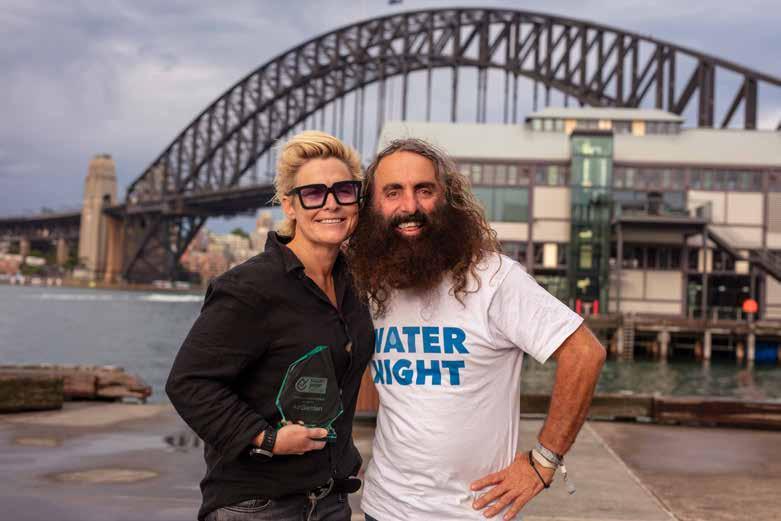
Water saving - That the primary purpose of the product or service is directly related to reducing actual water use and/ or using water more efficiently.
Fit for purpose - That the appropriate use of the product or service is consistent with supplied instructions and other documentation.
Meets regulations and standards - That the product or service is of high quality and meets industry standards, and customer and community expectations, in relation to water use.
Environmentally sustainable - That the product or service, while satisfying the above three criteria, is environmentally sustainable, and despite claimed water savings will not adversely affect the environment in other areas.
Information. A complete certified product and service listing can be found at www.smartdropcertified.org
Hort Innovation has launched a $60 million Venture Capital Fund, the first of its kind for Australian horticulture. The fund, created in partnership with Artesian Venture Partners, will back 20-30 early-stage busineses over the next five years to fasttrack innovations like automation, robotics, smart irrigation, and advanced breeding techniques.
The fund focuses on practical solutions to help growers tackle challenges, improve sustainability, and prepare for the future. Key areas include reducing farm waste, improving market access, and developing cutting-edge technology to solve labour shortages.
Information. Learn more about this initiative at www.frontiers.au
PO Box 484, Morningside Queensland 4170
T 07 3517 4000 E info@irrigation.org.au W www.irrigationaustralia.com.au





DAVE CAMERON
Chief Executive Officer IAL Brisbane Office
Dave.cameron@irrigation.org.au
NAOMI CARRAGHER
Business Administration Manager/ Company Secretary IAL Brisbane Office
Naomi.carragher@irrigation.org.au
MARIKE FRONEMAN
Accountant IAL Brisbane Office
Marike.froneman@irrigation.org.au
REBECCA NEW
Membership Manager IAL Perth Office
Rebecca.new@irrigation.org.au
STUART ALEXANDER
Senior Trainer & Assessor IAL Brisbane Office
Stuart.alexander@irrigation.org.au
IRRIGATION AUSTRALIA JOURNAL PRODUCTION TEAM
EDITORIAL
Editor | EVE WHITE
E eve@whiteediting.com
ADVERTISING
Maddison Coward
T (07) 3517 4000
E maddison.coward@irrigation.org.au
DESIGN & PRODUCTION
Bubble Creative | Annette Epifanidis
T 0416 087 412
E annette@bubblecreative.com.au





SAM O'BRIEN
Business Manager - Training IAL Brisbane Office sam.obrien@irrigation.org.au
AMY HALDANE RTO Compliance Officer - Training IAL Brisbane Office amy.haldane@irrigation.org.au
MADDISON COWARD Communications Coordinator IAL Brisbane Office Maddison.coward@irrigation.org.au
ASHLEIGH LANG Training and Certification Administrator IAL Brisbane Office Ashleigh.lang@irrigation.org.au
MADELEINE FARMILIO Administration Officer IAL Brisbane Office Madeleine.farmilio@irrigation.org.au
TERMS & CONDITIONS
Advertising in this journal is managed by Irrigation Australia. Advertising enquiries should be directed to Irrigation Australia. No special consideration will be given to any advertisers as far as editorial content or front cover material is concerned. Decisions about editorial content and the front cover are the prerogative of the editor and the National Board of the IAL. Irrigation Australia Limited takes no responsibility for the technical accuracy of article content.